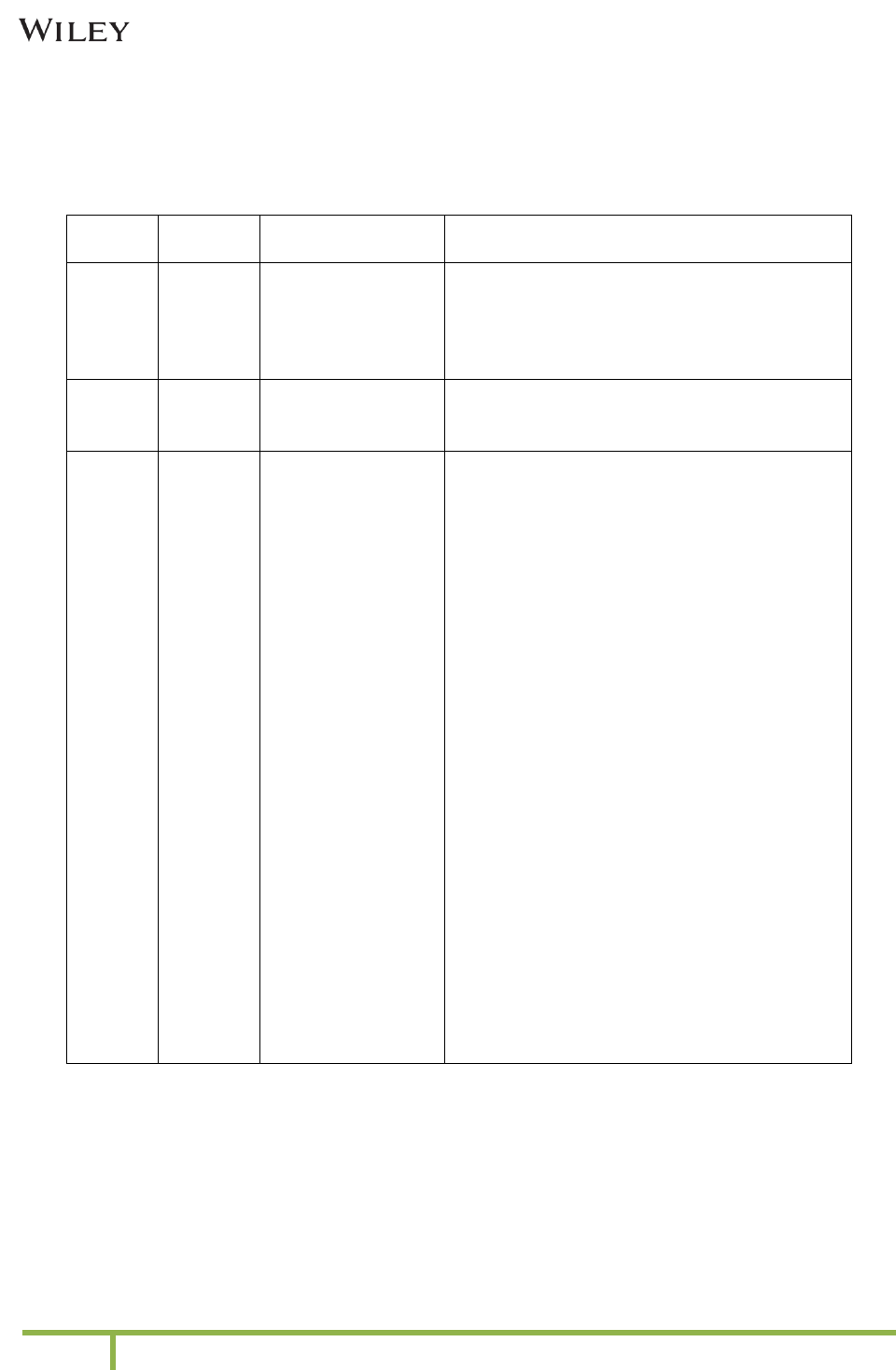
Version 1.3 Wiley Documentation
1
© Wiley
Wiley AMA Manual of Style: A User’s Guide
File name: Wiley AMA Manual of Style
Version date: 31 January 2019
Version
Date
Distribution
History
Status and Summary of Changes
Version
1.1
01 June
2018
Journal copyediting
level stakeholder
group
• Standardization of JSS conflicts with AMA
manual
• Addition of deviation/exceptions allowed
• Hyphenated given names in How to Cite
section
Version
1.2
25 June
2018
Journal copyediting
level stakeholder
group
• Degrees in Author Byline
• Figure legend update
• FAQ update to use an abbreviation
Version
1.3
31
January
2019
Journal copyediting
level stakeholder
group
• 2.1 Article History: dates guideline
• 2.4 Author Names: degree and job title update
• 2.5 Author Affiliation: China as country name
not to be used for Taiwan
• 2.6 Author Correspondence: placement
update; email on new line
• 2.7 Funding Information: placement update
• 2.9 Abstract/Summary: updated instructions
• 2.10 Keywords: to be included if journal style
• 2.12 Title Page Footnotes: order update
• 2.18.1 Figure Legends: label in all caps
• 2.19.3 Table Footnotes: order update
• 2.22 Equations: updated citation style
• 2.25 Conflict of Interest: heading update
• 2.26 Author Contributions: heading update
• 2.28 Endnotes: heading update
Page Footnotes: AMA symbols
• 2.30 Author Biography: standard style for
author names and headings
• 2.31 Supporting Information: updated citation
style and standard text
• 3.2.18 Nomenclature (Equipment, Devices,
and Reagents): manufacturer location not
needed anymore
• 3.2.23 Spelling out Numbers (Decimals): no
leading zero before decimal point with
probability values

Version 1.3 Wiley Documentation
2
© Wiley
Contents
2.1 Article History ................................................................................................................................................... 6
2.2 Article Category ................................................................................................................................................ 6
2.3 Article Title ......................................................................................................................................................... 6
2.4 Author Names (Byline) .................................................................................................................................. 7
2.5 Author Affiliation .............................................................................................................................................. 8
2.6 Author Correspondence ................................................................................................................................. 8
2.7 Funding Information ...................................................................................................................................... 9
2.8 Handling Editor .............................................................................................................................................. 10
2.9 Abstract/Summary ....................................................................................................................................... 10
2.10 Keywords (If Applicable) ........................................................................................................................... 11
2.10.1 Keyword Style in Articles Without Abstract ............................................................................. 12
2.11 Articles Without Abstract or Keywords ............................................................................................... 12
2.12 Title Page Footnotes ..................................................................................................................................... 12
2.13 Copyright Line ................................................................................................................................................ 13
2.14 Front Page Footnotes ................................................................................................................................... 13
2.15 Epigraphs .......................................................................................................................................................... 14
2.16 Running Head .................................................................................................................................................. 14
2.17 Heading Levels ................................................................................................................................................ 14
2.18 Figures ............................................................................................................................................................... 15
2.18.1 Figure Legends ...................................................................................................................................... 16
2.18.2 Parts of Figures ..................................................................................................................................... 16
2.18.3 Figure Citations in Text ..................................................................................................................... 16
2.19 Tables ................................................................................................................................................................. 17
2.19.1 Table Legends ....................................................................................................................................... 17
2.19.2 Table Body .............................................................................................................................................. 17
2.19.3 Table Footnotes .................................................................................................................................... 17
2.19.4 Table Citations in Text ....................................................................................................................... 18
2.20 Lists ..................................................................................................................................................................... 18
2.20.1 Display Lists ........................................................................................................................................... 18
2.20.2 Run-in Lists ............................................................................................................................................ 19
2.21 Enunciations (Math Statements) ............................................................................................................ 19
2.22 Equations .......................................................................................................................................................... 19
2.23 Extracts .............................................................................................................................................................. 20
2.24 Acknowledgments ......................................................................................................................................... 20
2.25 Conflict of Interests/Disclosure of Interests ...................................................................................... 21
2.26 Author Contributions ................................................................................................................................... 21
2.27 ORCID ID ........................................................................................................................................................... 21
2.28 Endnotes/Page Footnotes ......................................................................................................................... 21
2.29 References ........................................................................................................................................................ 22
2.29.1 Citing References in Text .................................................................................................................. 22
2.29.2 Reference List ........................................................................................................................................ 22
2.30 Author Biography/Biosketch (If Applicable) ..................................................................................... 25
2.31 Supporting Information .............................................................................................................................. 26
2.32 How to Cite ....................................................................................................................................................... 26
2.33 Appendix (If Applicable) ............................................................................................................................ 27
PREFACE .............................................................................................................................................................................. 5
1 STRUCTURING AND XML TAGGING ................................................................................................................. 5
2 MECHANICAL EDITING ......................................................................................................................................... 6

Version 1.3 Wiley Documentation
3
© Wiley
2.34 Punctuation ...................................................................................................................................................... 28
2.34.1 Quotation Marks ................................................................................................................................... 28
2.34.2 Parentheses and Brackets ................................................................................................................ 28
2.35 Units of Measure ............................................................................................................................................ 29
2.35.1 SI Derived Units .................................................................................................................................... 29
2.35.2 SI Prefixes ............................................................................................................................................... 29
2.36 Numbers and Percentages ......................................................................................................................... 30
2.37 Small Caps ......................................................................................................................................................... 31
3.1 Mechanical Editing ........................................................................................................................................ 32
3.2 Copyediting ...................................................................................................................................................... 32
3.2.1 Nouns ........................................................................................................................................................ 32
3.2.2 Pronouns ................................................................................................................................................. 32
3.2.3 Verbs .......................................................................................................................................................... 32
3.2.4 Tense ......................................................................................................................................................... 33
3.2.5 Subject-Verb Agreement ..................................................................................................................... 33
3.2.6 Comma ..................................................................................................................................................... 34
3.2.7 Semicolon ................................................................................................................................................ 35
3.2.8 Colon ......................................................................................................................................................... 35
3.2.9 Hyphenation .......................................................................................................................................... 36
3.2.10 Dashes ...................................................................................................................................................... 38
3.2.11 Slash (Virgule, Solidus) ...................................................................................................................... 38
3.2.12 Apostrophe ............................................................................................................................................. 39
3.2.13 Ellipses ..................................................................................................................................................... 39
3.2.14 Latin and Greek Versus English ..................................................................................................... 39
3.2.15 Capitalization ......................................................................................................................................... 39
3.2.16 Italics ......................................................................................................................................................... 41
3.2.17 Abbreviations ........................................................................................................................................ 41
3.2.18 Nomenclature ........................................................................................................................................ 43
3.2.19 Eponyms .................................................................................................................................................. 46
3.2.20 Greek Letters ......................................................................................................................................... 46
3.2.21 Gene Names ............................................................................................................................................ 46
3.2.22 General Rules ......................................................................................................................................... 46
3.2.23 Spelling out Numbers ......................................................................................................................... 47
4.1 Mechanical Editing ........................................................................................................................................ 48
4.2 Copyediting ...................................................................................................................................................... 48
4.2.1 Preferred Spelling ................................................................................................................................ 48
4.2.2 Parallel Construction .......................................................................................................................... 48
4.2.3 Misplaced Modifiers............................................................................................................................ 49
4.2.4 Commonly Misused Words and Phrases .................................................................................... 49
4.2.5 Jargon ........................................................................................................................................................ 49
4.2.6 Anatomy .................................................................................................................................................. 50
4.2.7 Disabilities .............................................................................................................................................. 50
4.2.8 Grammar ................................................................................................................................................. 50
4.2.9 Usage ......................................................................................................................................................... 50
4.2.10 Scientific and Mathematical Content ........................................................................................... 50
4.2.11 Manuscript Components ................................................................................................................... 51
5.1 Mechanical Editing ........................................................................................................................................ 52
3 COPYEDITING LEVEL 1 ....................................................................................................................................... 32
4 COPYEDITING LEVEL 2 ....................................................................................................................................... 48
5 COPYEDITING LEVEL 3 ....................................................................................................................................... 52

Version 1.3 Wiley Documentation
4
© Wiley
5.2 Copyediting ...................................................................................................................................................... 52
5.2.1 Spelling ..................................................................................................................................................... 52
5.2.2 Grammar ................................................................................................................................................. 52
5.2.3 Syntax ....................................................................................................................................................... 52
5.2.4 Usage ......................................................................................................................................................... 53
5.2.5 Scientific and Mathematical Content ........................................................................................... 53
5.2.6 Manuscript Components ................................................................................................................... 53
5.2.7 Typography ............................................................................................................................................ 53
Differences Between Original AMA and Wiley AMA ...................................................................................... 54
Frequently Asked Questions (FAQS) .................................................................................................................... 57
APPENDIX ......................................................................................................................................................................... 54

Version 1.3 Wiley Documentation
5
© Wiley
Preface
This manual has been prepared specifically for people who edit manuscripts to be published by
Wiley.
It contains the following sections:
Section 1: Structuring and XML Tagging.
Section 2: Mechanical Editing. This presents the specific requirements for content editing and
formal style or mark-up.
Section 3: Copyediting Level 1. Copyediting includes elements of both mechanical and language
editing and also editing of the scientific and mathematical content.
Section 4: Copyediting Level 2. This presents the specific requirements for language editing
pertaining to Level 2.
Section 5: Copyediting Level 3. This knowledge has been collected in numerous excellent reviews
of good editorial practice. We acknowledge the most important of these sources to which this
manual owes a great deal: the AMA Manual of Style, 10th edition.
We look forward to receiving further suggestions for improving this manual.
This style manual does not pretend to be complete or neutral and might change according to the
AMA Manual of Style or Wiley copyediting guidelines.
1 Structuring and XML Tagging
Structuring is the process by which the typesetter identifies the various elements in the article
and applies the electronic tagging (mark-up), including the metadata, DOI, author names,
affiliations, headings, paragraphs, tables, figures, charts, links, and so on, according to WileyML
3G specifications.
Structuring (not the technical or content style sheets within the journal-specific style sheet [JSS])
and XML tagging of the manuscript according to WileyML 3G specifications have to be done by
the typesetter (ie, the Wiley production team/vendor).
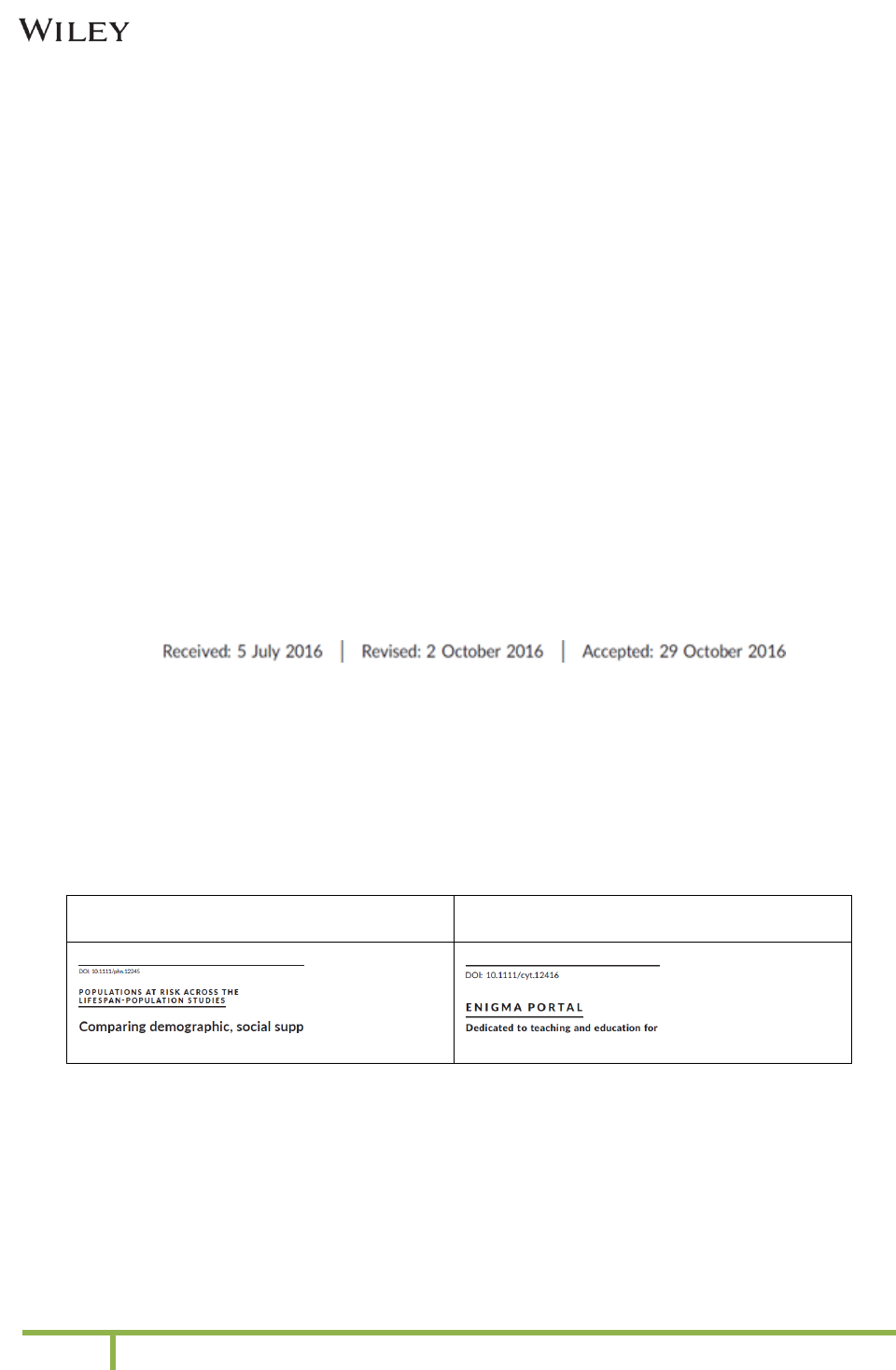
Version 1.3 Wiley Documentation
6
© Wiley
2 Mechanical Editing
Mechanical editing comprises the technical and content-related editing specifically mentioned in
the journal style sheet. Here are the rules that have to be followed for journals adhering to the
New Journal Design AMA style, regardless of their level of editing.
2.1 Article History
• Include article history dates if this is the journal style; if they are not provided, do not
raise query.
• Do not retain dates for Introduction articles.
• No period at the end of history dates.
• Standardized text: “Received,” “Revised,” “Accepted” (no “Published on” date). History
should be included only for the titles which have included this section in the old layout.
• Format: eg, 8 November 2017.
• The dates should be set on the top of the first page. The placement of the dates is not the
responsibility of the copyeditor.
For example:
2.2 Article Category
• The category name should be ranged left, all caps, bold, and underlined in the PDF file.
• Use for all article types.
• The category name should be placed above the article title.
Article with lengthy category
Article with subtitle (subcategory)
2.3 Article Title
• Article titles are to be set in sentence case but capitalize proper nouns.
• Bold, roman, no end period.
• Capitalize the first word after a colon or em dash unless it is a lower-case abbreviation or
a specified usage.
• Spell out numerals if they appear at the beginning of the title.
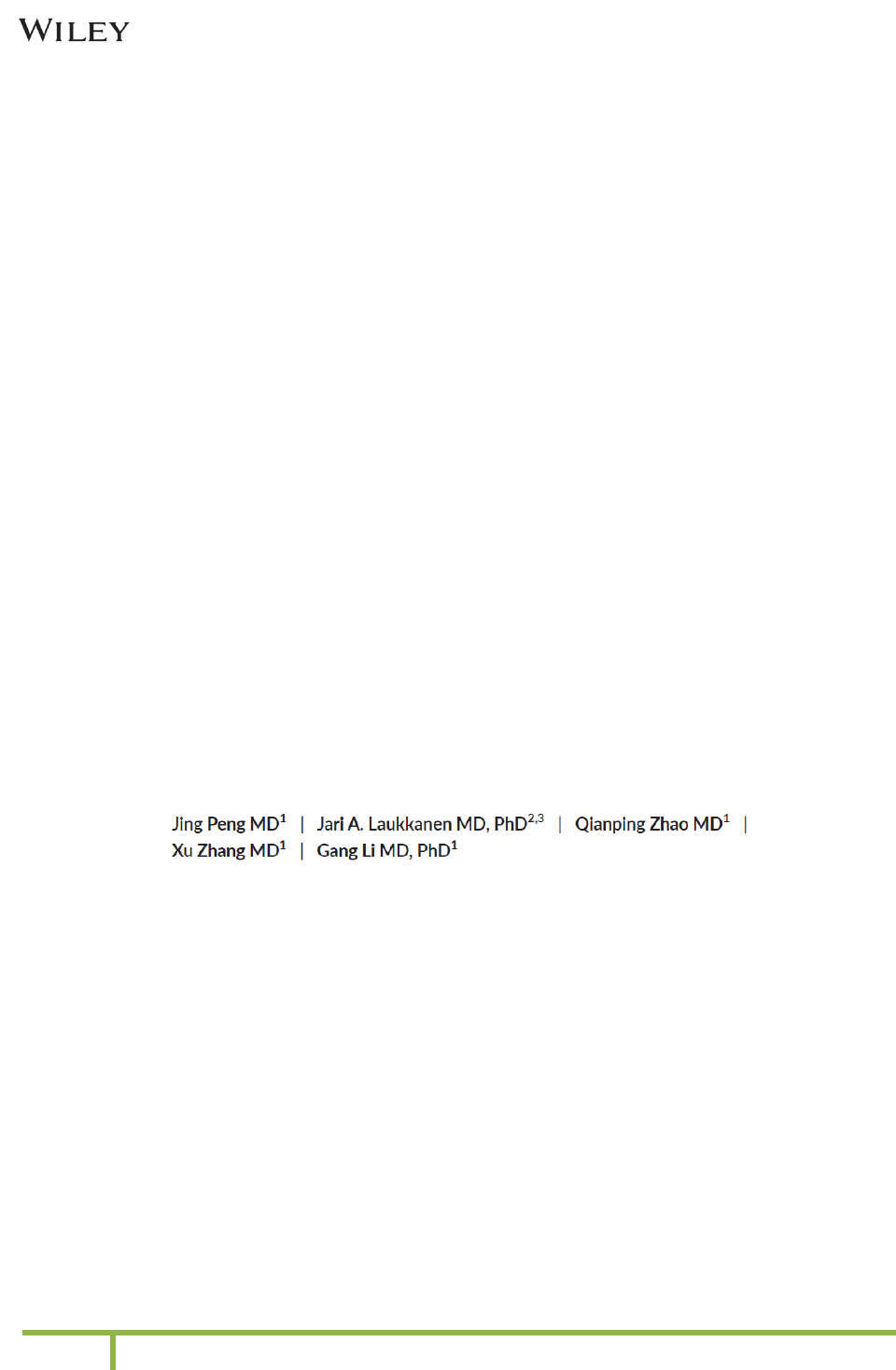
Version 1.3 Wiley Documentation
7
© Wiley
• No drug names should appear in the title or subtitle; use the approved generic or
nonproprietary name and query the author.
• Genus and species should be expanded and italicized.
• A unit of measure that follows a number (as a quantity) at the beginning of a sentence,
title, or subtitle should not be abbreviated.
For example:
Sexual dysfunction and response to medications in multiple sclerosis
For more information, refer to AMA Manual of Style, 10th edition, p 20.
2.4 Author Names (Byline)
• Authors’ full names should be used (first name spelled out); initials are spaced out.
• Title case, ranged left; do not use “and” or “&” between last two authors.
• Author names should be separated by a vertical bar.
• Use superscript numerals to indicate affiliations. If there is just one affiliation, then no
superscript numbers should be used.
• The superscript Arabic numbers should be closed up with the author surname.
• Asterisk should not be used to denote corresponding authors, but name, affiliation, and
email should be provided in the Correspondence section.
• Degree to be included if present in existing journal style. Degree without periods; no
comma between author name and degree; more than one degree for the same author
should be separated with a comma.
For example:
• Job title to be included if present in existing style. No comma between author name and
job title; comma separator needed between a degree and job title.
Examples:
John Engler MPH, Postdoctoral Researcher
Ellen Kojima Research Assistant
• If an author holds 2 doctoral degrees (eg, MD and PhD, or MD and JD), either or both may
be used, in the order preferred by the author. If the author has a doctorate, degrees at the
master’s level usually are not included, although exceptions may be made when the
master’s degree represents a specialized field or a field different from that represented
by the doctorate (eg, MD, MPH).
• Academic degrees below the master’s level usually are omitted unless these are the
highest degrees held. Exceptions are made for specialized professional certifications,
degrees, and licensure (eg, RN, RD, COT, PA) and for specialized bachelor’s degrees (eg,
BSN, BPharm) and combination degrees (eg, BS, M[ASCP]). Generally, US fellowship

Version 1.3 Wiley Documentation
8
© Wiley
designations (eg, FACP or FACS) and honorary degrees (eg, PhD[Hon]) are omitted.)
For example:
2.5 Author Affiliation
• Placement: below author names.
• Affiliations should be linked to author names with superscripted Arabic numerals.
• Affiliations should be set in roman and title case.
• Short address with Arabic numerals as links. ZIP code, PO box number, and street names
are not allowed.
• List department, institution, city, state (if US), or country (outside the USA).
• Traditionally, China is used to refer to mainland China (People’s Republic of China); in
case of Taiwan, ROC (Republic of China) should be retained. Exercise caution in making
any changes, and check with the author if in doubt.
• No country name for US papers.
• US state names should be spelled out in affiliations (eg, Michigan).
(Note that in the correspondence address they should be abbreviated with postal
abbreviations: eg, MI.)
• UK: no full stops, same as in text.
• Provide city and country for authors whose affiliations are outside the USA and include
province for authors from Canada or Australia.
For example:
1
Department of Preventive Medicine, Baylor College of Medicine, Houston, Texas
2
Department of Obstetrics, University of Utah, Salt Lake City, Utah
3
Department of Dermatology, University Hospital, Ghent, Belgium
3
Department of Endocrinology, University College London, London, UK
2.6 Author Correspondence
• Placement below author affiliations.
• The heading “Correspondence” should be set in bold and roman.
• Author name and address details in roman.
• Short address with email ID is enough. No phone and fax numbers required and to be
deleted.

Version 1.3 Wiley Documentation
9
© Wiley
• Provide country names other than USA.
• US state names should be abbreviated in the correspondence address with postal
abbreviations (eg, MI).
(Note that in the affiliations they should be spelled out: eg, Michigan.) Full stop at the end of
the correspondence address before email.
• Email starts on a new line. Use “Email” without a hyphen.
• Use a semicolon to separate two email addresses of the corresponding author.
For example:
Correspondence
Patrick J. Gullane, MB, FRCS, University Health Network, University of Toronto, 200
Elizabeth St, Suite 8N-800, Toronto, ON M5G 2C4, Canada.
Email: patrick.gullane@uhn.on.ca
• For other categories (Editorial, Letter, etc.) follow the existing style for Correspondence
section.
2.7 Funding Information
• If funding information is supplied as a part of acknowledgements, then the funding agency
and grant number are to be tagged and displayed below the Correspondence section on
the first page, but do not remove the funding information from the acknowledgments,
even if it means that funding info will appear twice, once on the first page and again in
acknowledgments.
• If funding information is supplied as a separate section, then the funding agency and grant
number(s) are to be tagged and the complete section has to be displayed below the
Correspondence section on the first page.
• If the content is long and cannot be displayed below the Correspondence section on the
first page, then place it as a first page footnote.
• If funding information is supplied as “None” or something similar to that, then it need not
be displayed for PDF or HTML.
• For articles where we list the author names at the end of the article (Editorial, Letter,
Correspondence, etc.), funding information can be displayed in the same section as it is
supplied in the input (after Acknowledgments and before affiliation).
• Section heading should be “Funding information” and should be set on an independent
line in bold roman and sentence case.
For example:
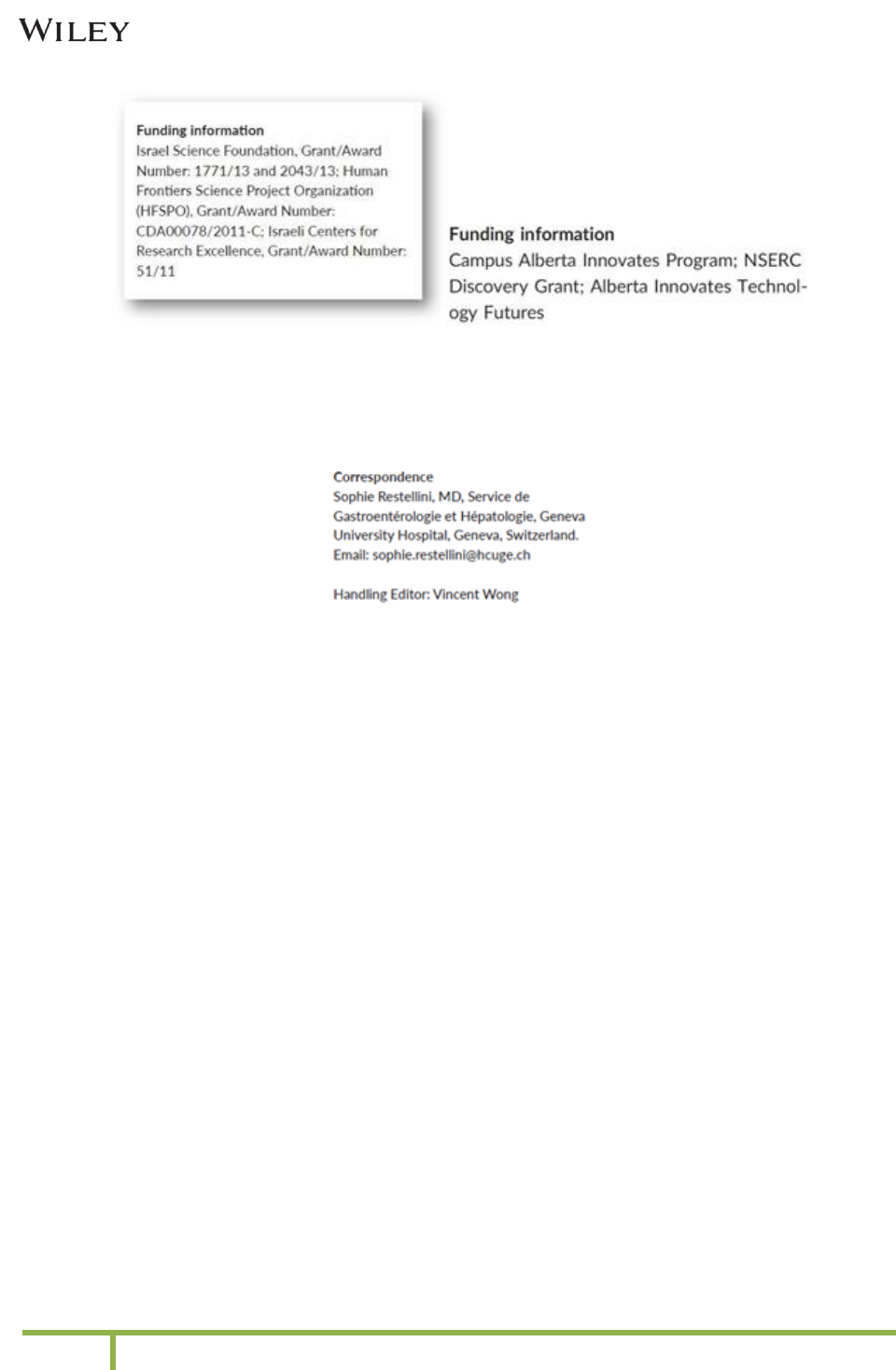
Version 1.3 Wiley Documentation
10
© Wiley
2.8 Handling Editor
Place on the first page under Correspondence.
For example:
2.9 Abstract/Summary
• Follow existing journal style for whether the abstract should be structured, unstructured,
or list style.
• Either Abstract or Summary is allowed as heading.
• Abstract/Summary text in roman.
• Unstructured abstract: Only one paragraph is allowed; there are no subsections.
• Please follow existing journal style.
• Structured abstract subheadings in bold, followed by colon, title case.
• Reference citations are not allowed.
• Abbreviations in the abstract text are allowed; define all abbreviations and acronyms on
first occurrence and use abbreviations thereafter.
• Numerals: At the beginning of a sentence, spell out numbers and the word percent.
• Genus and species names should be defined at first use as in text.
• Numbered abstracts are allowed for some society journals.
• Follow journal style sheet for “Contact Points.”
• A copyright line is not allowed in the Abstract section.
• If an isotope is mentioned, spell out the name of the element when it is first used and
provide the isotope number on the line.
For example:

Version 1.3 Wiley Documentation
11
© Wiley
Abstract
Combination chemotherapy is an effective strategy for increasing anticancer efficacy,
reducing side effects, and alleviating drug resistance. Here we report that a combination
of a recently identified novel chalcone derivative, chalcone-24 (Chal-24) and TNF-
related apoptosis-inducing ligand (TRAIL) significantly increases cytotoxicity in lung
cancer cells. Chal-24 treatment significantly enhanced TRAIL-induced activation of
caspase-8 and caspase-3, and the cytotoxicity induced by the combination of these
agents was effectively suppressed by the pan-caspase inhibitor z-VAD-fmk. The Chal-24
and TRAIL combination suppressed expression of cellular FLICE (FADD-like IL-1β-
converting enzyme)-inhibitory protein large (c-FLIP
L
) and cellular inhibitor of apoptosis
proteins (c-IAPs), and ectopic expression of c-FLIP
L
and c-IAPs inhibited the potentiated
cytotoxicity. In addition, TRAIL and Chal-24 cooperatively activated autophagy.
Suppression of autophagy effectively attenuated cytotoxicity induced by the Chal-24
and TRAIL combination, which was associated with attenuation of c-FLIP
L
and c-IAPs
degradation. Altogether, these results suggest that Chal-24 potentiates the anticancer
activity of TRAIL through autophagy-mediated degradation of c-FLIP
L
and c-IAPs, and
that the combination of Chal-24 and TRAIL could be an effective approach to improving
chemotherapy efficacy.
2.10 Keywords (If Applicable)
• The heading “KEYWORDS” should be set in all caps, bold, and roman.
• Include keywords if journal style.
• Placed under Abstract.
• Set in lowercase (except for proper nouns, etc.); alphabetical order; separated by
commas; no end period; unjustified.
• Abbreviations are allowed.
• Chemical formulas beginning with symbols (eg, δ13C, δ15N) are listed at the end of the
keywords; formulas starting with letters (eg, C3) should be arranged alphabetically
among the other keywords; formulas starting with numerals (eg, 13C) come at the
beginning of the keywords.
For example:
KEYWORDS
lower urinary tract symptoms, overactive bladder, overactive bladder symptom score
For more information, refer to AMA Manual of Style, 10th edition, p 24.
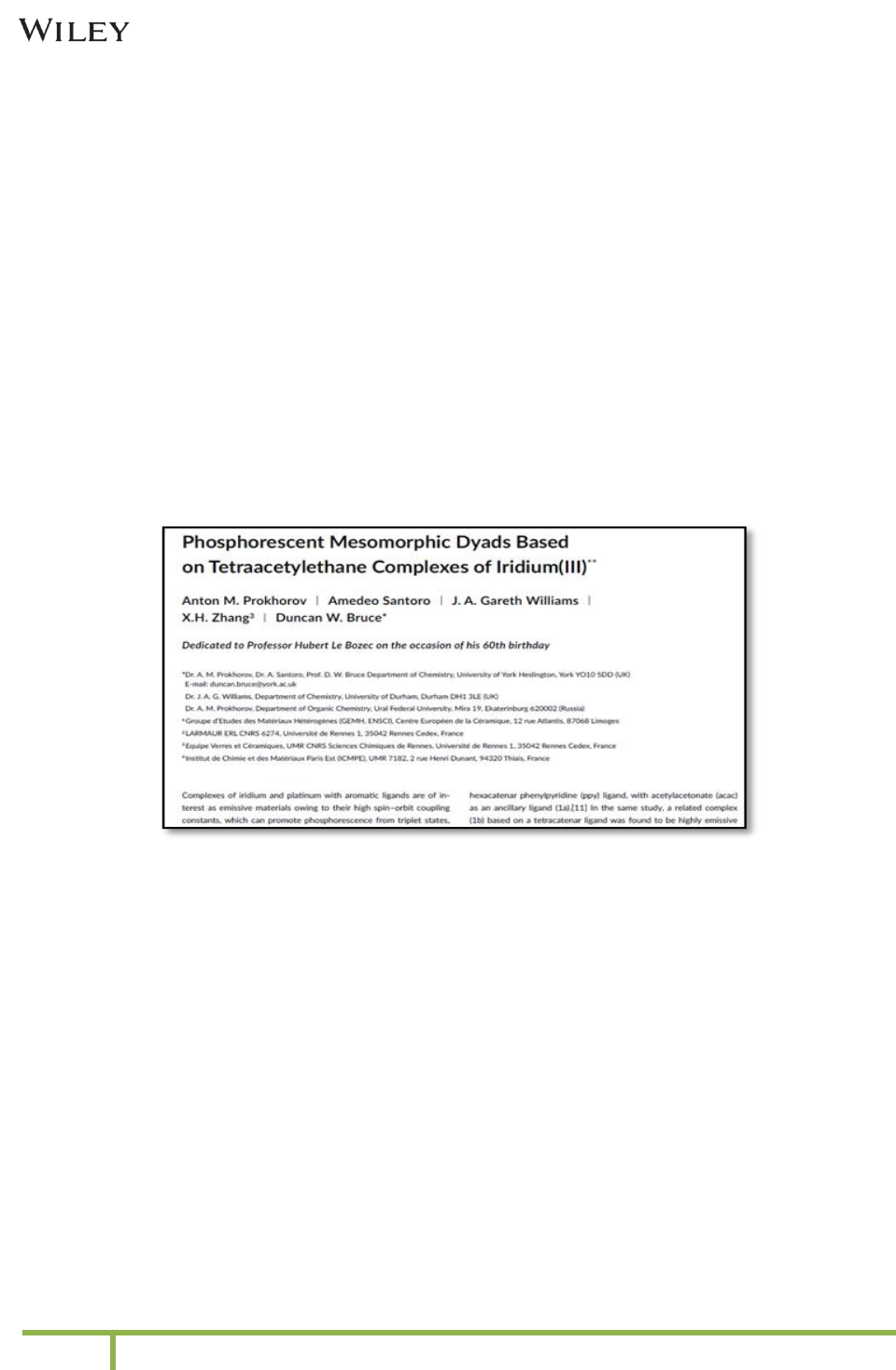
Version 1.3 Wiley Documentation
12
© Wiley
2.10.1 Keyword Style in Articles Without Abstract
Correspondence
John A. Doe, Department of Pediatrics, Baylor College of Medicine, 1 Baylor Plaza,
Houston, TX 77030.
Email: jdoe@baylor.edu
Funding information
National Institute of Child Health and Human Development; CIHR, Grant/Award
Number: HOA-80072
KEYWORDS
breast cancer, cancer, caregivers, dyadic, oncology, qualitative, survivors
2.11 Articles Without Abstract or Keywords
The title page for these articles is set as shown:
2.12 Title Page Footnotes
• Do not use symbols in title page footnotes except for deceased authors (dagger †).
• A list of the XYZ Group members (collaborative authors) can be cited in affiliation footnote
or acknowledgement section.
• Footnote order: abbreviations, equal contributions, paper presentation, deceased
authors.
• Abbreviations:
- Not all the journals use abbreviation lists.
- Unjustified style with the format: “Abbreviations: xx, xxxx; xx, xxxxx; xx, xxxx.”
- Set in alphabetical order.
For example:

Version 1.3 Wiley Documentation
13
© Wiley
Abbreviations: CR, conserved region; CSC, cancer stem cell; EC, embryonic carcinoma;
ES, embryonic stem; GCNF, germ cell nuclear factor; NR, nuclear receptor; PP, proximal
promoter; RA, retinoic acid.
Myrtle Coe and Simon Foe contributed equally to this study.
This study was first presented at the...
†Died May 14, 2014.
2.13 Copyright Line
• OO copyright line: The copyright line should be moved up above the footer for OO articles.
• The line should be set at the bottom of the first page.
For example:
Note: Copyeditors are not responsible for applying the copyright line.
2.14 Front Page Footnotes
For example:
• There is an end period after every footnote.
• The footnote should be placed in the left column.
• Journal titles containing one or two words: Spell out the title in full.
• Journal titles containing three or more words: Abbreviate the title.
For example:
Note: Copyeditors are not responsible for these footnotes.
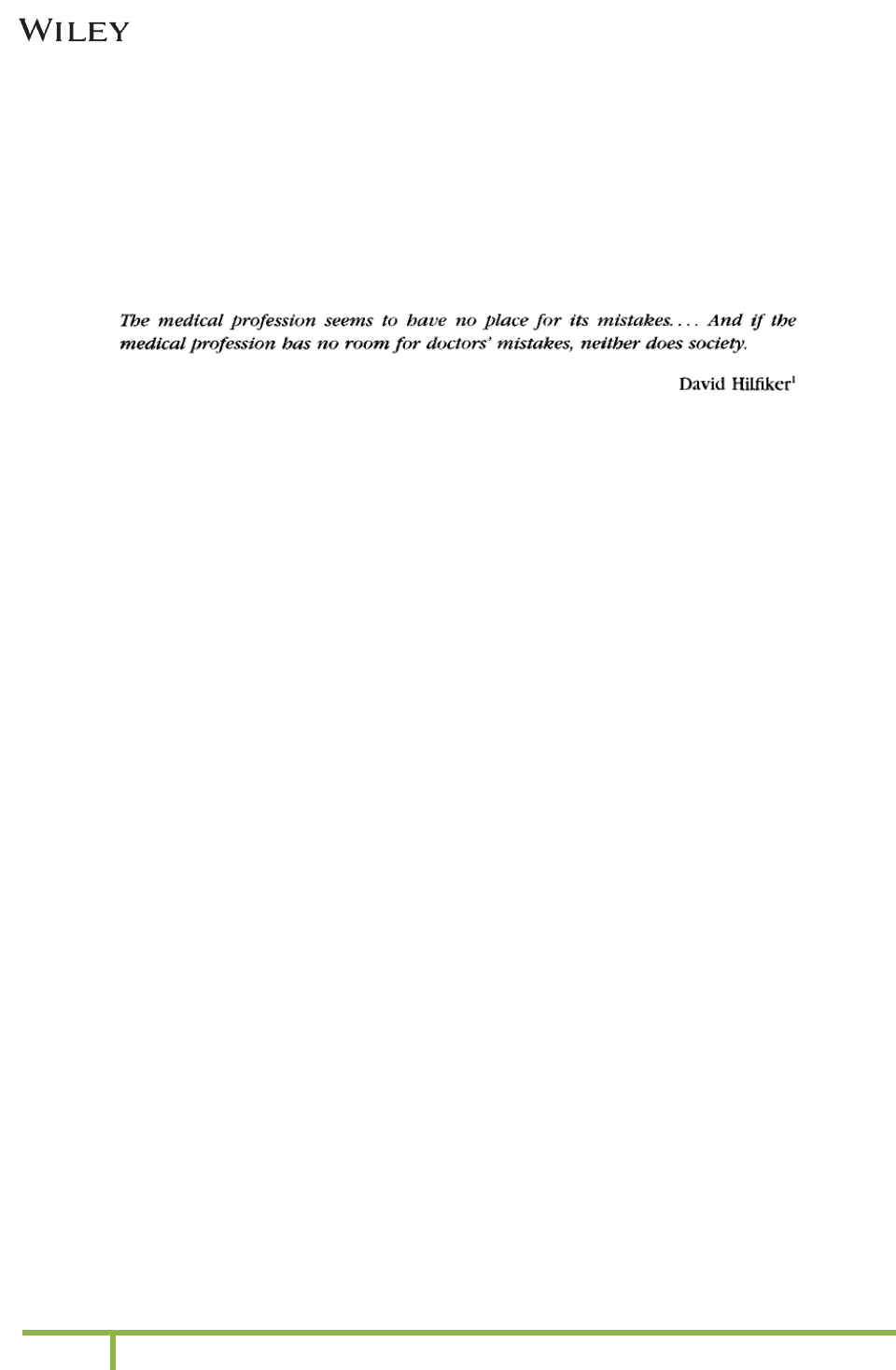
Version 1.3 Wiley Documentation
14
© Wiley
2.15 Epigraphs
• An epigraph is a short quotation set at the beginning of the article; epigraphs are used
only sometimes.
• Epigraphs are set in italics and are flush left.
• The signature is set in roman type underneath the quotation and is flush right.
For example:
For more information, refer to AMA Manual of Style, 10th edition, p 24.
2.16 Running Head
• No short title.
• Author names: use only surnames, set in full caps.
• Single author: SURNAME.
• Two authors: SURNAME 1 and SURNAME 2 (“and” in small caps).
• More than two authors: SURNAME 1 et al. (“et al.” in roman and small caps).
• Lowercase particles in small caps (eg, van KARGA).
• Miscellaneous categories (Editorial, Letter to the Editor, Correspondence): The article
category should be used as running head in full caps.
• When this information appears at the top of the page, it is called a running head; when it
appears at the bottom of the page, it is called a running foot.
2.17 Heading Levels
Headings 1, 2, 3, and 4—unjustified style:
• Number and headings should be bold; dividing line should be roman.
• Heading 1: ALL CAPS.
• Headings 2, 3, 4, and 5: sentence case except proper nouns.
• Section numbers are not applicable for Headings 4 and 5.
• Article types such as editorials and book reviews do not need to have introductions.
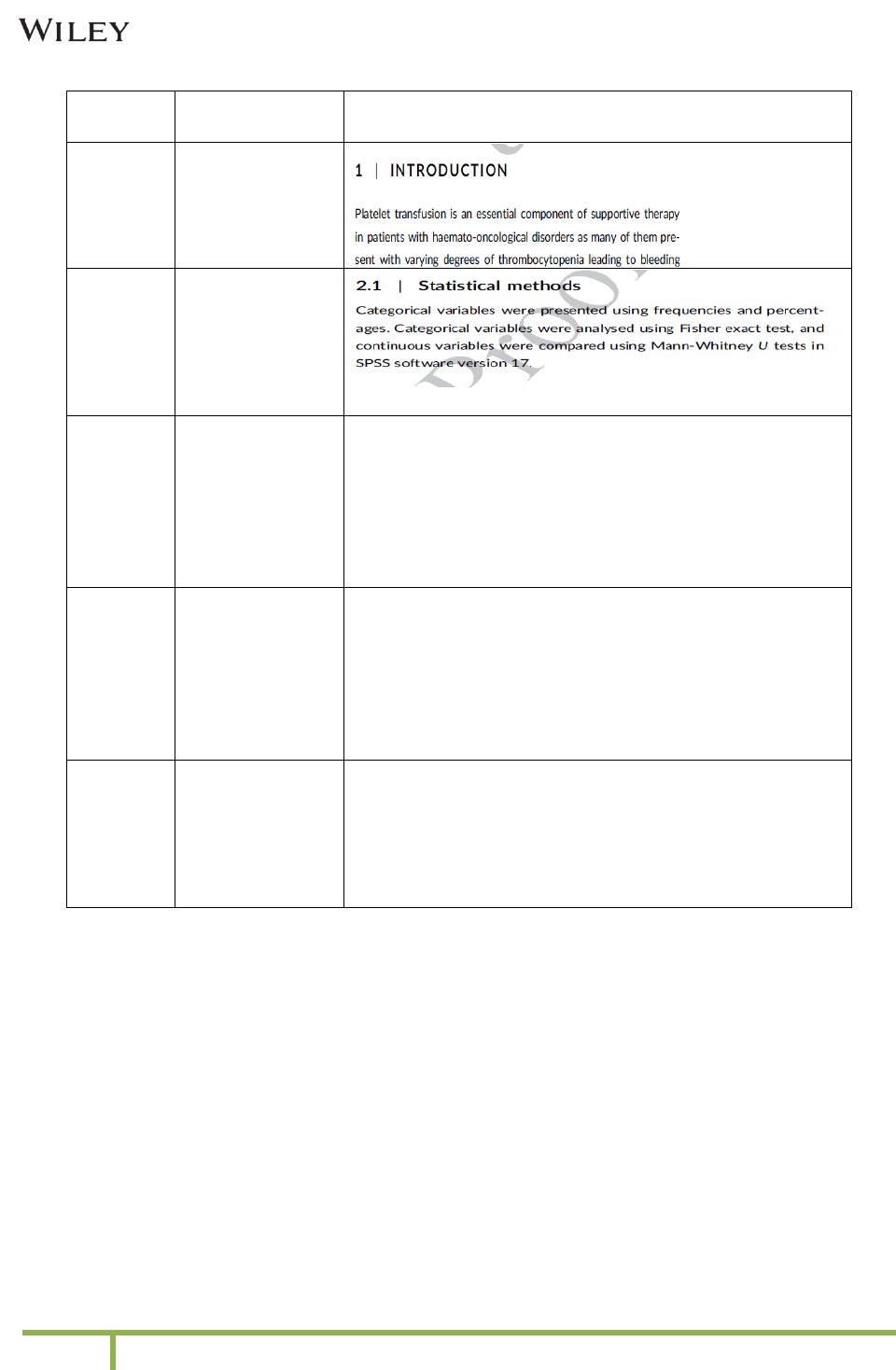
Version 1.3 Wiley Documentation
15
© Wiley
Heading
level
Description
Example
1
Numbered with
Arabic numbers
Bold
ALL CAPS
2
Numbered
Bold
Sentence case
(except for
proper nouns
and acronyms)
3
Numbered
Bold
Sentence case
(except for
proper nouns
and acronyms)
Free-standing
2.2.1 | Screening of differentially expressed genes
4
Unnumbered
Lightface
Italics
Sentence case
without end
period
Free-standing
Acceptance set
5
Unnumbered
Lightface
Italics
Sentence case
with end period
Run-on
Properties. There is considerable variability in
phenotype in patients with missense mutations…
Items to Avoid in Headings:
• Using a single abbreviation as a heading.
• Expanding abbreviations for the first time in a heading.
• Citing figures or tables in headings.
For more information, refer to AMA Manual of Style, 10th edition, p 26.
2.18 Figures
• Figures should be placed close to their main citation.
• In figures, the three-letter abbreviations for days of the week and months may be used
For example: Mon, Jan (see AMA Manual of Style, 10th edition, section 14.3).

Version 1.3 Wiley Documentation
16
© Wiley
2.18.1 Figure Legends
• Sentence case, roman, unjustified, no period at the end (except if integral part of title, as
abbreviation, etc).
• Label in ALL CAPS and bold (FIGURE 1) without period.
• Abbreviations need to be redefined.
• Raise a query if any symbol in the artwork is not defined in the figure caption.
2.18.2 Parts of Figures
• Artwork: Use UPPERCASE labels enclosed in parentheses. For example: (A), (B)
• Captions: Use UPPERCASE labels followed by a comma.
For example: A, Histological section of…. B, Comparison of…
• Match the figure parts given in the legend with the parts given in the artwork.
2.18.3 Figure Citations in Text
• All figures must be cited in the text by number.
• The order of the main citations of figures in the text must be sequential.
• Insert missing citations and query the author.
• Spell out in full (even in parentheses):
For example:
Figure 1 shows…
As shown in Figures 2 and 3…
in the illustration (Figure 1).
…which are leiomyosarcomas (Figures 1 and 2).
• Figure parts: Use UPPERCASE labels closed-up with the number, separated by comma
without space after the comma:
For example:
Figure 1A
Figure 1A-C
Figures 2B and 2D
Figure 1A,B
Figures 2D,S and 5D,E
Wrong: Figure 1(A); Fig. 1A; Figure 1A, B; Figure 2 A,B
• Citations to tables, figures, and equations from other sources should be lowercase and
contracted (eg, table 1, fig. 3, eq. 5).

Version 1.3 Wiley Documentation
17
© Wiley
For more information, refer to AMA Manual of Style, 10th edition, p 98.
2.19 Tables
• Tables should be placed close to their main citation on the top or bottom of the page.
2.19.1 Table Legends
• Sentence case, roman, unjustified, no period at the end (except if integral part of title, as
abbreviation, etc).
• Label in ALL CAPS and bold (TABLE 1); use Arabic numerals for table numbers.
• Place footnote callouts at the end of the caption whenever possible.
• Multiple sentences are not allowed in a table caption.
• Table titles should be brief explanations of the tabular data—query authors on long table
titles, esp. when footnote materials are included in table titles (ie, references to significant
differences should go in the footnote).
• Abbreviations need to be redefined.
2.19.2 Table Body
• Column headings: initial caps, bold, roman, bottom aligned.
• The column entries follow left alignment with decimal/operator alignment.
• Each cell entry in sentence case.
• In tables, the three-letter abbreviations for days of the week and months may be used
For example: Mon, Jan (see AMA Manual of Style, 10th edition, section 14.3).
• An ellipsis may be used to indicate that no data are available for a cell.
For more information, refer to AMA Manual of Style, 10th edition, p 82.
2.19.3 Table Footnotes
• Justified; footnotes end with a period.
• All footnotes are placed above one another.
• Order of table footnotes:
- general notes
- abbreviations and their definitions
- linked table footnotes
- levels of probability
• The heading “Note” in italics is used for general statements. (This heading is not required
if there are only labelled and linked table footnotes.):
Note. xxxxx.

Version 1.3 Wiley Documentation
18
© Wiley
• Abbreviations: Use the heading “Abbreviation” if only one abbreviation follows; use
“Abbreviations” if there are more. Abbreviations need to be redefined; list them in
alphabetical order, use semicolons as separators, and a period at the end.
• Use superscript letters in alphabetical order for linked table footnotes (a, b, c, …);
asterisks are used for levels of probability.
For more information, refer to AMA Manual of Style, 10th edition, p 90.
For example:
Abbreviations: CI, confidence interval; OR, odd ratio.
a
Controls were matched to cases by age, sex, index date, and duration of recorded
history in the UK General Practice Research Database before the index date.
2.19.4 Table Citations in Text
• All tables must be cited in the text by number.
• The order of the main citations of tables in the text must be sequential.
• Insert missing citations and query the author.
• Spell out in full (even in parentheses).
For example:
Table 1 shows…
As shown in Tables 2 and 3…
…text (Table 1).
…text (Tables 1 and 2).
• For more than two tables, use a hyphen (Tables 1-3).
• Outside parentheses, use “to” instead of a hyphen (Tables 1 to 3).
• Citations to tables, figures, and equations from other sources should be lowercase and
contracted (eg, table 1, fig. 3, eq. 5).
2.20 Lists
2.20.1 Display Lists
• All types of lists are allowed.
• Line space above and below a list is used.
Numbered List
Bulleted List
1. Text.
2. Text.
3. Text.
• Text.
• Text.
• Text.
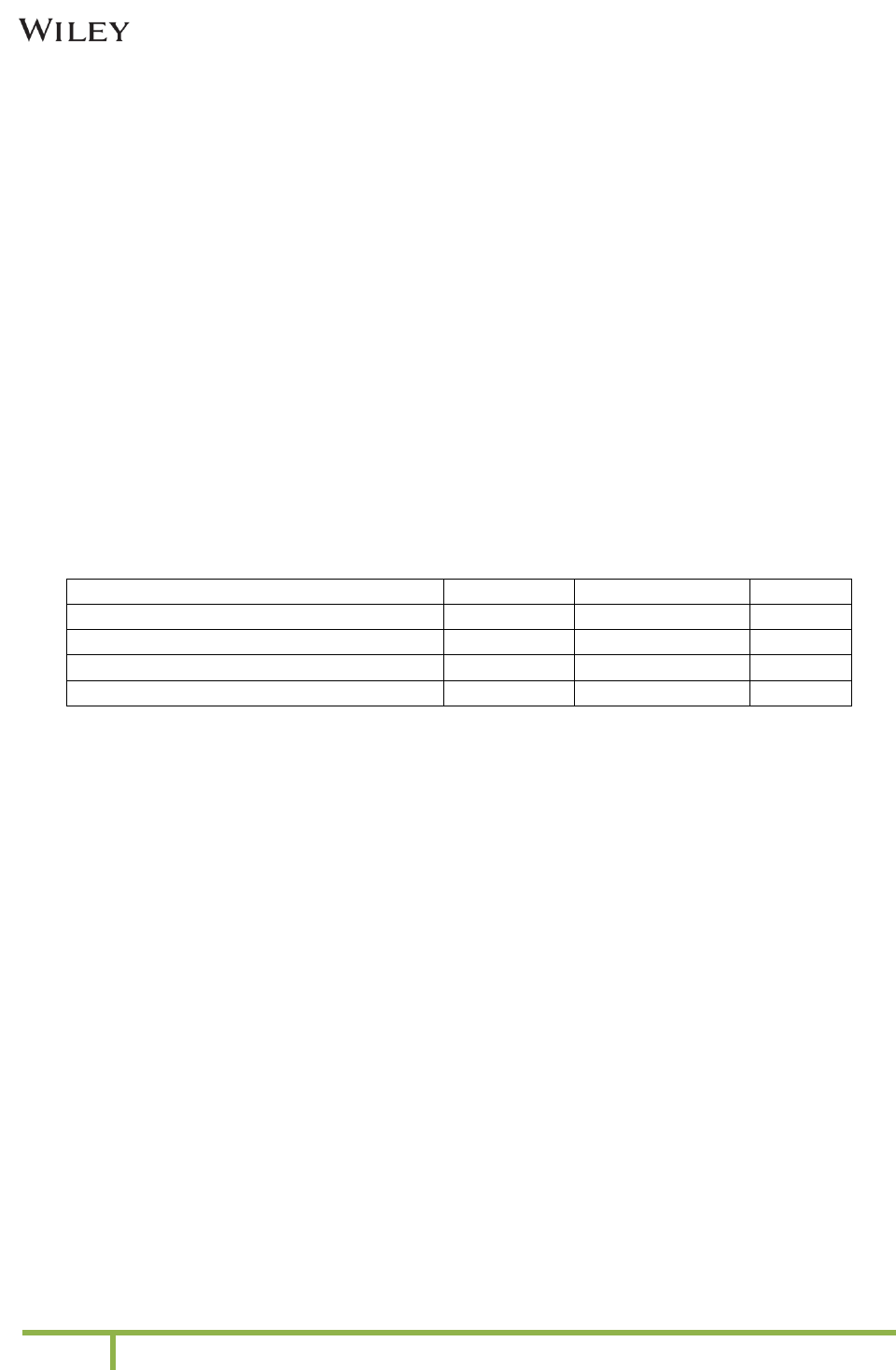
Version 1.3 Wiley Documentation
19
© Wiley
2.20.2 Run-in Lists
• In text use lowercase alphabets within round parentheses.
For example:
(a) text, (b) text, and (c) text
• For a run-in list, use semicolons to separate three or more elements that have internal
commas.
For example:
We tested three groups: (a) low scorers, who scored fewer than 20 points; (b) moderate
scorers, who scored 20 to 50 points; and (c) high scorers, who scored more than 50
points.
2.21 Enunciations (Math Statements)
• Should be set as AMS style, regardless of referencing or copyediting style for the journal.
• Should be indented on both sides.
Enunciation
Title
Number (if any)
Text
Theorem (and Assertion, Axiom, etc.)
Roman, bold
Roman, bold
Italics
Proof
Italics
Roman
Roman
Definition (and Assumption, Example, etc.)
Roman, bold
Roman, bold
Roman
Remark (and Answer, Case, Claim, etc.)
Italics
Roman
Roman
Further elaboration and examples can be found on pages 31-35 of the AMS Style Guide.
2.22 Equations
• The equation number should be set flush right in parentheses.
• Equation numbers should appear in sequence.
• Symbols representing variables and scalars should be italicized (eg, a + b = c).
• Arrays and vectors should be in boldface (eg, a, b, c, d).
• Boldface uppercase letters are to be used to refer to matrices. As in, A, B, C, D, etc.
• Differential “d” is set in italic type.
• The symbol for exponential is “e”
• Greek symbols as variables should be set italics.
• Punctuation after a set-off equation is helpful. Display equations are often preceded by
punctuation.
• Equation citations:
For example:
Equation (1) shows…
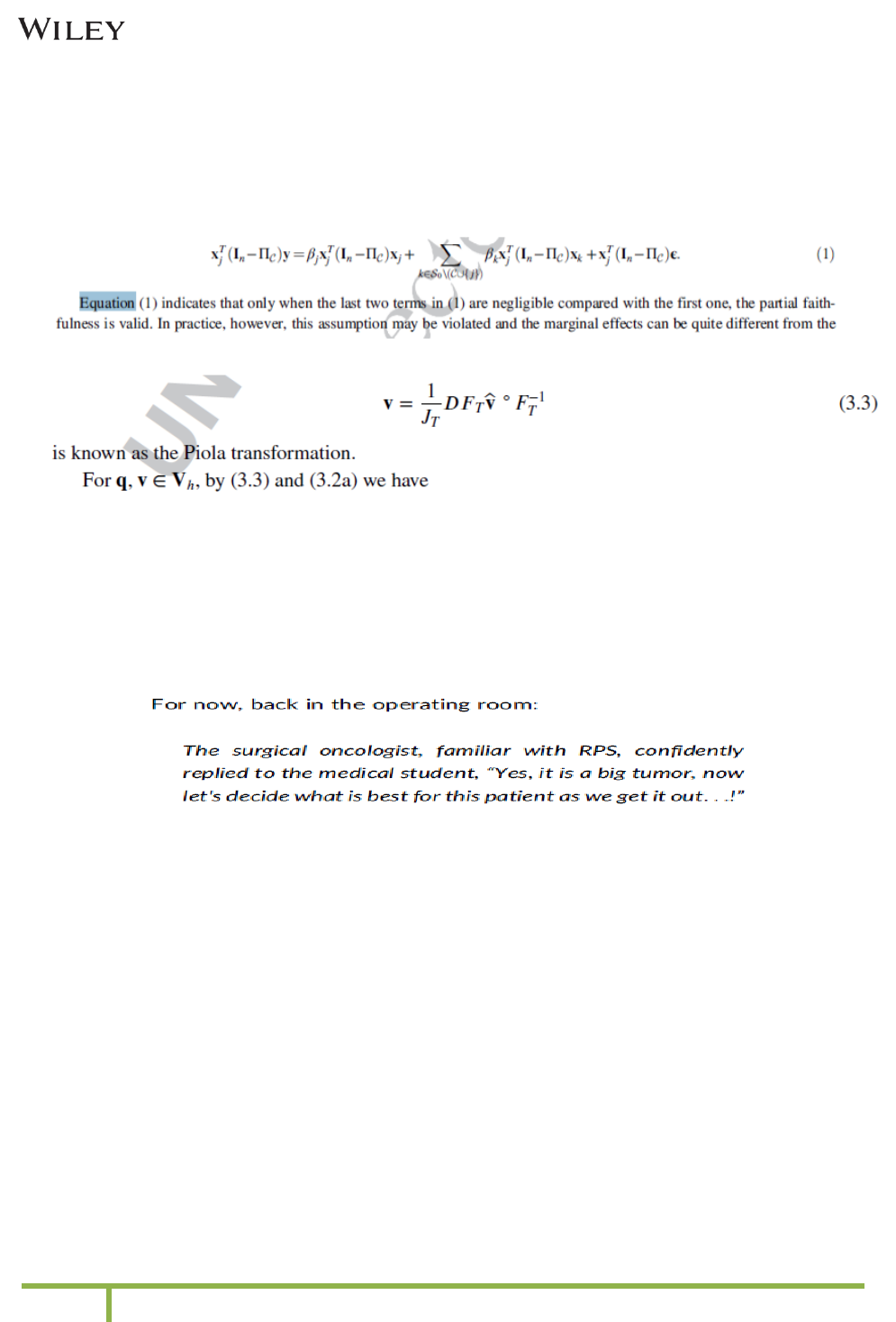
Version 1.3 Wiley Documentation
20
© Wiley
Equations (2) and (3) suggest…
As shown in Equations (5) and (6) (not eq or Eq.)
…in the illustration (Equation 1).
For example:
For more information, refer to AMA Manual of Style, 10th edition, p 908.
2.23 Extracts
• Extracts are indented on both sides.
• The copyeditor is not responsible for this indentation.
For example:
2.24 Acknowledgments
• The ACKNOWLEDGMENTS head should be all caps and bold roman.
• If there is more than one person to thank, the heading should be plural
(ACKNOWLEDGMENTS); otherwise the heading should be singular
(ACKNOWLEDGMENT).
• The acknowledgments should be in a single paragraph.
• If funding information appears in the acknowledgments, do not remove it, even if it means
that funding info will appear twice, once on the first page and again in acknowledgments.
• For journals using US spellings, it should be ‘Acknowledgment’ or ‘Acknowledgments’.
• For journals using US spellings, it should be ‘Acknowledgement’ or ‘Acknowledgements’.
For example:
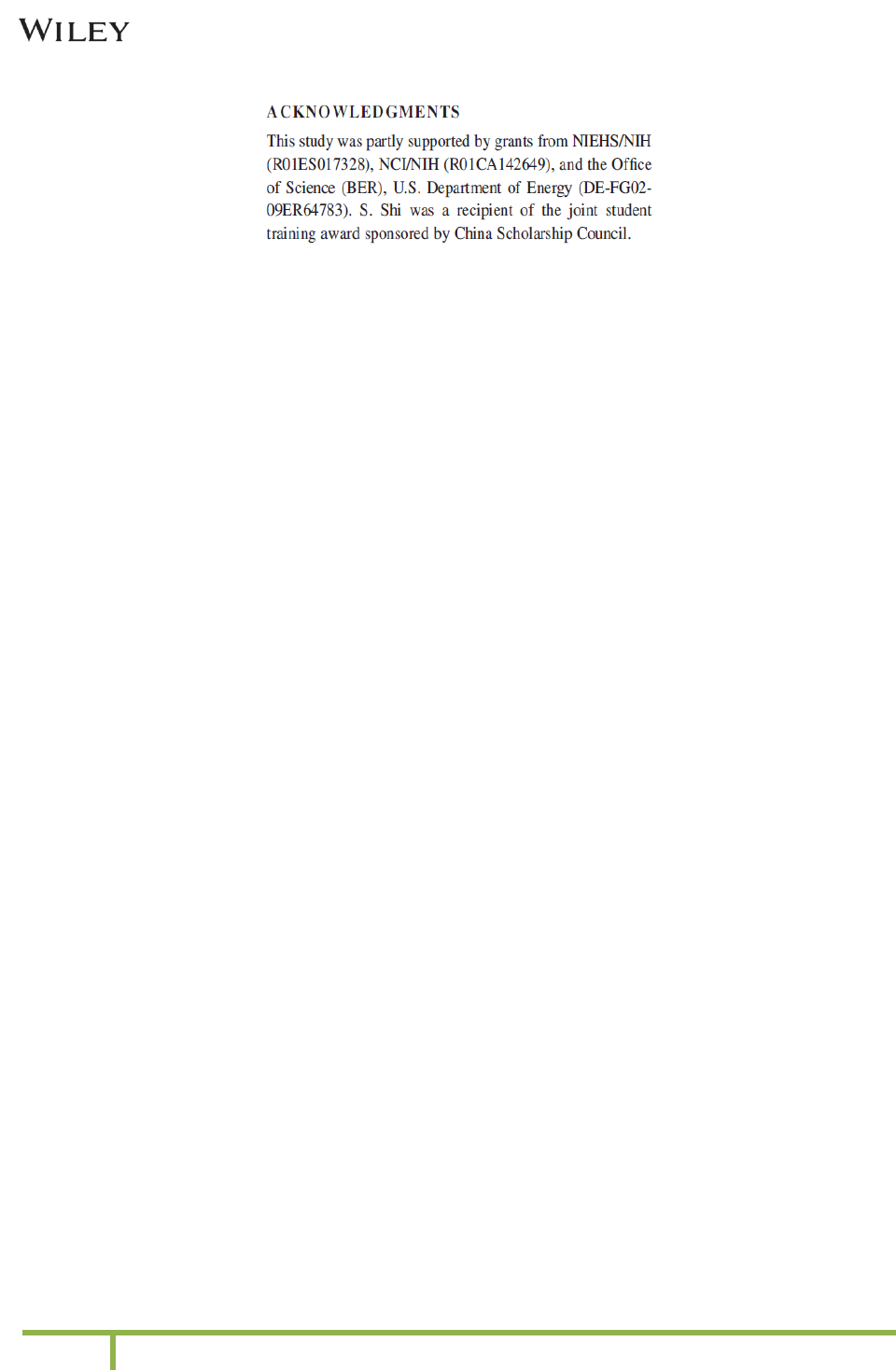
Version 1.3 Wiley Documentation
21
© Wiley
2.25 Conflict of Interests/Disclosure of Interests
• This section will not be used in all journals/articles, but when it is used, it should be
placed after the Acknowledgment section.
• Should be set in all caps.
• Section heading should be “CONFLICT OF INTEREST” or “CONFLICT OF INTERESTS.”
For example:
CONFLICT OF INTEREST
The author declares that there is no conflict of interest that could be perceived as
prejudicing the impartiality of the research reported.
2.26 Author Contributions
• Retain if given by the author.
• Placement after Conflict of Interests/Disclosure of Interests before References.
For example:
AUTHOR CONTRIBUTIONS
Study concept and design: Fortes, Melchi, and Abeni. Analysis and interpretation of data:
Fortes, Mastroeni, and Leffondre. Drafting of the manuscript: Fortes. Critical revision of
the manuscript for important intellectual content: Mastroeni, Leffondre, Sampogna,
Melchi, Mazzotti, Pasquini, and Abeni. Statistical analysis: Fortes and Mastoeni. Obtained
funding: Pasquini and Abeni. Study supervision: Fortes, Melchi, and Abeni.
AUTHOR CONTRIBUTIONS
Yoon Kong Loke developed the original idea and the protocol, abstracted and analyzed
data, wrote the manuscript, and is the guarantor. Deirdre Price and Sheena Derry
contributed to the development of the protocol and prepared the manuscript.
2.27 ORCID ID
The ORCID ID logo will appear in the PDF with a hyperlink to the ORCID ID in the author byline
(check for the ORCID ID in the metadata; updated 23 Feb 2017). Copyeditors are not responsible
for inserting the ORCID logo.
2.28 Endnotes/Page Footnotes
• Existing journal style will be applied for body footnotes (whether page footnotes or

Version 1.3 Wiley Documentation
22
© Wiley
endnotes should be used). Only few journals use endnotes.
• Endnotes:
- “ENDNOTE” (or “ENDNOTES” if there are more) in all caps is the standard heading
text to be used for endnotes. Do not use “NOTE” as the default heading text.
- Placement: before References.
- Endnotes are cited by sequential superscript lowercase letters, following any
punctuation mark except a dash. A footnote indicator that appears with a dash—like
this
a
—always precedes the dash.
• Bottom-of-the-page footnotes:
- Use AMA symbols (sequence: *, †, ‡, §, ¶, #, ||,**, ††, ‡‡, §§, ¶¶, ##)
For example:
*xxxxx.
†xxxxx.
2.29 References
2.29.1 Citing References in Text
• Follow the numbered AMA reference style.
• Superscript reference numbers are placed after periods and commas and before colons
and semicolons.
• Reference numbers should be in sequence.
• Use a hyphen to join the first and last numbers of a closed series.
• Use commas without spaces to separate other parts of a multiple citation.
For more information, refer to AMA Manual of Style, 10th edition, p 43.
2.29.2 Reference List
• The DOI format should be changed to the URL format.
For more information, refer to AMA Manual of Style, 10th edition from pp 48-78.
Journal article
with 1-6
authors
Hu P, Reuben DB. Effects of managed care on the length of time that
elderly patients spend with physicians during ambulatory visits.
Med Care. 2002;40(7):606-613.
Journal article
with more
than 6 authors
Geller AC, Venna S, Prout M, et al. Should the skin cancer
examination be taught in medical school? Arch Dermatol.
2002;138(9):1201-1203.
Electronic
journal article
Gage BF, Fihn SD, White RH. Management and dosing of warfarin
therapy. Am J Med. 2000;109(6):481-488.
https://doi:10.1016/S0002-9343(00)00545-3.
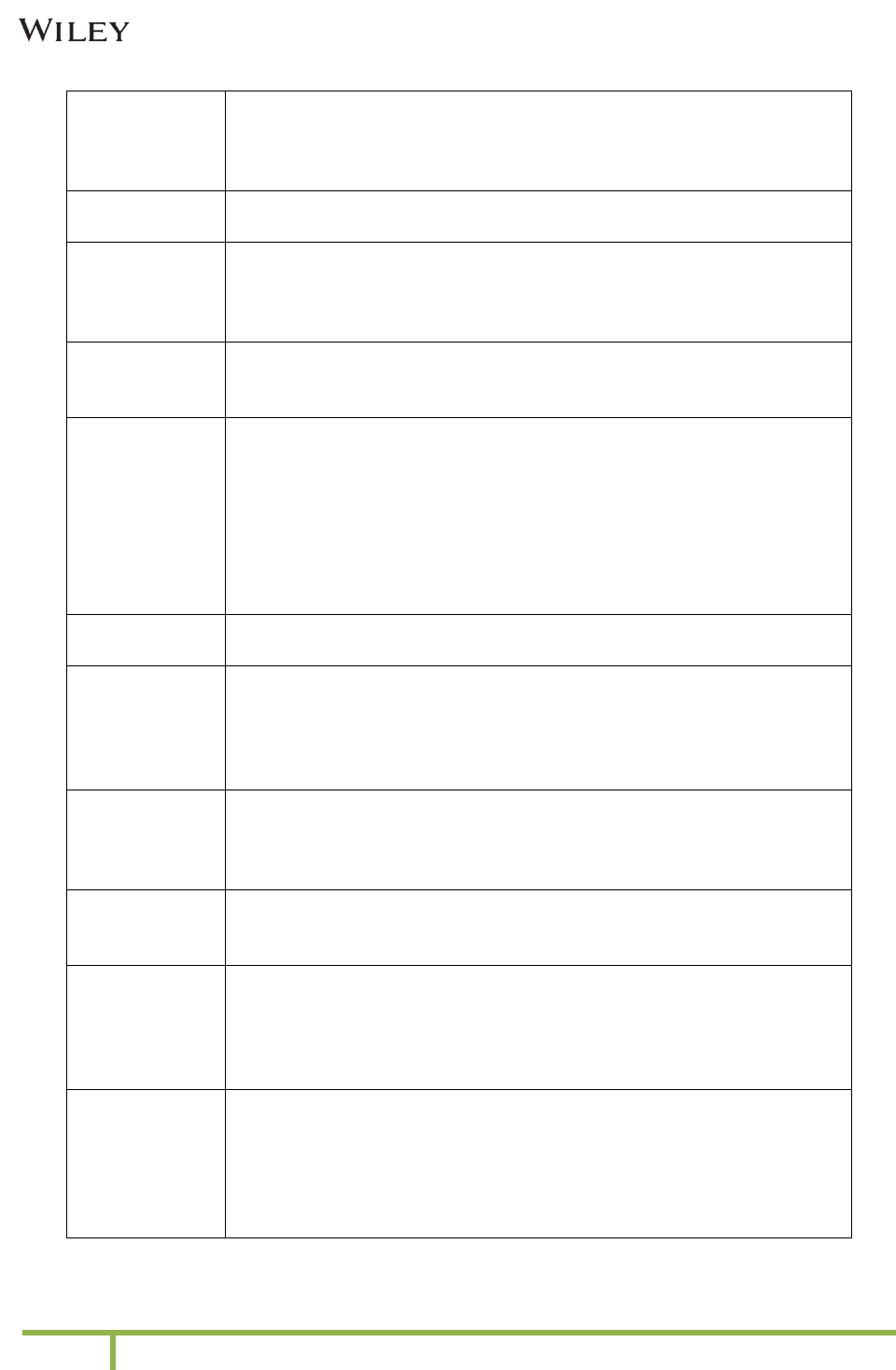
Version 1.3 Wiley Documentation
23
© Wiley
Journal article
published
online ahead of
print
Chau NG, Haddad RI. Antiangiogenic agents in head and neck
squamous cell carcinoma: tired of going solo [published online
ahead of print September 20, 2016]. Cancer. https://doi:
10.1002/cncr.30352.
Discontinuous
pagination
Altman LK. Medical errors bring calls for change. New York Times.
July 18, 1995:C1, C10.
Journals
without
volume
numbers
Hastings C. Differences in professional practice model outcomes: the
impact practice setting. Crit Care Nurs Q. November 1995;(18):75-
86.
Parts of an
issue
Newman KM, Johnson CL, Jean-Claude J, Li H, Ramey WG, Tilson MD.
Cytokines which activate proteolysis are increased in abdominal
aortic aneurysms. Circulation. 1994;90(pt 2):224-227.
Special or
theme issue
Marais AD, Firth JC, Batemon M, Jones J, Mountney J, Marten C.
Atorvastatin is a powerful and safe agent for lowering plasma
cholesterol concentrations in heterozygous familial
hypercholesterolaemia [abstract 226]. Atherosclerosis.
1994;109(special issue):316.
Winker MA, Flanagin A, eds. Emerging and reemerging global
microbial threats. JAMA. 1996;275(theme issue):163-256.
Supplements
Lagios MD. Evaluation of surrogate endpoint biomarkers for ductal
carcinoma in situ. J Cell Biochem. 1994;19(suppl):186-188.
Abstract of a
complete
article taken
from another
publication
Falco NA, Upton J. Infantile digital fibromas [abstract taken from
JAMA. 1996;275:1462b]. J Hand Surg Am. 1995;20:1014-1020.
Journal article
with no named
author or with
a group name
Centers for Disease Control and Prevention (CDC). Licensure of a
meningococcal conjugate vaccine (Menveo) and guidance for use—
Advisory Committee on Immunization Practices (ACIP), 2010.
MMWR Morb Mortal Wkly Rep. 2010;59(9):273.
Discussants
Allo MD. In discussion of: McKindley DS, Fabian TC, Boucher BA,
Croce MA, Proctor KG. Antibiotic pharmacokmetics following fluid
resuscitation from traumatic shock. Arch Surg. 1995;130:1321-1329.
Correction
Nelson HD, Nevitt MC, Scott JC, Stone KL, Cummings SR; for the
Study of Osteoporotic Fractures Research Group. Smoking, alcohol,
and neuromuscular and physical function of older women
[published correction appears in JAMA. 1996;275:446]. JAMA.
1994;272:1825-1831.
Retractions
Article containing a retraction:
Garey CE, Schwarzman AL, Rise ML, Seyfried TN. Notice of retraction
of “Ceruloplasmin gene defect associated with epilepsy in EL mice”
[retraction of: Garey CE, Schwanman AL, Rise ML, Seyfried TN. In:
Nat Genet. 1994;6:426431]. Nat Genet. 1995;11:104.
Article retracted:
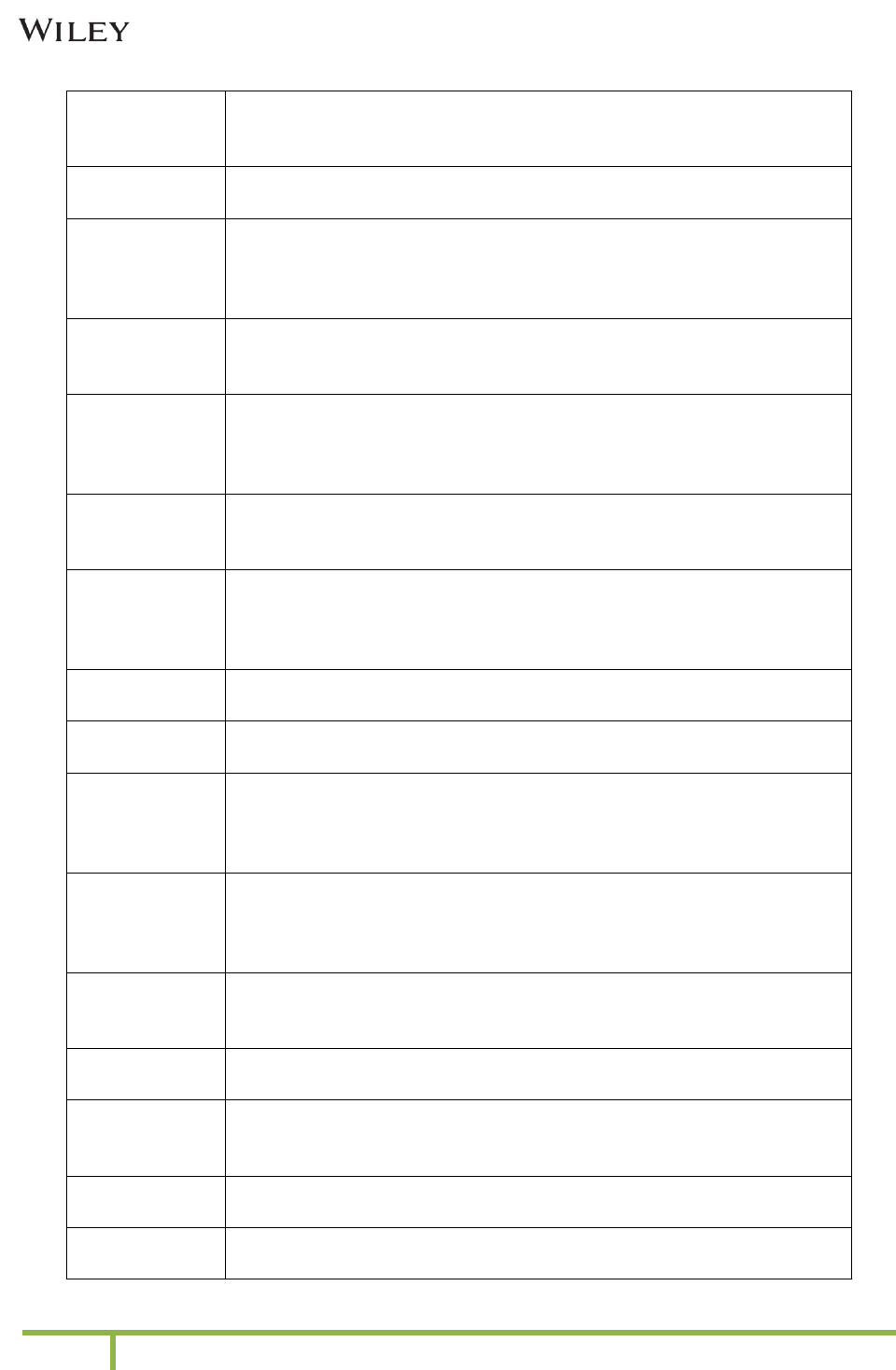
Version 1.3 Wiley Documentation
24
© Wiley
Liou GI, Wang M, Matragoon S. Precocious IRBP gene expression
during mouse development [retracted in: Invest Ophthalmol Vis Sci.
1994;35:3127]. Invest Ophthalmol Vis Sci. 1994;35:1083-1088.
Reference to
an entire book
Sherlock S, Dooley J. Diseases of the Liver and Biliary System. 9th ed.
Oxford, England: Blackwell Scientific Publications; 1993.
Chapter in a
book
Nahas GG, Goldfrank LR. Marijuana. In: Goldfrank LR, Flomenbaum
NE, Lewin NA, Weisman RS, Howland MA, Hoffman RS, eds.
Goldfrank’s Toxicologic Emergencies. 5th ed. Norwalk, CT: Appleton
& Lange; 1994:889-898.
Editors and
translators
Plato. The Laws. Taylor EA, trans-ed. London, England: JM Dent &
Sons Ltd; 1934:104-105. [Plato is the author; Taylor is the
translator-editor.]
Volume
number
Bithell TC. Hereditary coagulation disorders. In: Lee GR, Bithell TC,
Foerster J, Athens JW, Lukens JN, eds. Wintrobe’s Clinical
Hematology. Vol 2. 9th ed. Philadelphia, PA: Lea & Febiger;
1993:1422-1472.
Edition
number
Frolich ED. Pathophysiology of systemic arterial hypertension. In:
Schlant RC, Alexander KW, eds. Hurst’s The Heart: Arteries and Veins.
8th ed. New York, NY: McGraw-Hill Book Co; 1994:1391-1401.
Page numbers
or chapter
number
Litt IE. Special health problems during adolescence. In: Nelson WE,
senior ed. Behrman RE, Kliegman RM, Arvim Ahh, eds. Nelson
Textbook of Pediatrics. 15th ed. Philadelphia, PA: WB Saunders Co;
1996:541-560.
Newspapers
Gianelli DM. AMA launching ethics institute for research, outreach
projects. American Medical News. November 4, 1996:1, 75.
Government
bulletins
US Bureau of the Census. Statistical Abstract of the United States: 1993.
113th ed. Washington, DC: US Bureau of the Census; 1993.
Serial
publications
Miller JE, Korenman S. Poverty, Nutritional Status, Growth and
Cognitive Development of Children in the United States. Princeton, NJ:
Princeton University Office of Population Research; 1993. Working
Paper 93-5.
Theses and
dissertations
Knoll EG. Mental Evolution and the Science of Language: Darwin,
Miiller, and Romanes on the Development of the Human Mind
[dissertation]. Chicago, IL: Committee on the Conceptual Foundations
of Science, University of Chicago; 1987.
Special
collections
Hunter J. An account of the dissection of morbid bodies: a monograph
or lecture. 1757;No. 32:30-32. Located at: Library of the Royal College
of Surgeons, London, England.
Package inserts
Lamasil [package insert]. East Hanover, NJ: Sandoz Pharmaceuticals
Corp; 1993.
Patents
Furukawa Y, Kishimoto S, Nishikawa K, inventors; Takeda Chemical
Industries Ltd, assignee. Hypotensive imidazole derivatives. US patent
4 340 598. July 20, 1982.
Audiotapes,
videotapes
The Right to Die . . . The Choice Is Yours [videotape]. New York, NY:
Society for the Right to Die; 1987.
Television or
radio
Lundberg GD. The medical profession in the 1990s [transcript].
American Medical Television. September 15, 1993.

Version 1.3 Wiley Documentation
25
© Wiley
broadcast
Software
Epi Info [computer program]. Version 6. Atlanta, GA: Centers for
Disease Control and Prevention; 1994.
Software
manual
Dean AG, Dean JA, Coulombier D, et al. Epi Info, Version 6: A Word-
Processing, Database, and Statistics Program for Public Health on
IBM-Compatible Microcomputers. Atlanta, GA: Centers for Disease
Control and Prevention; 1994.
CD-ROMs
The Oxford English Dictionary [CD-ROM]. 2nd ed. New York, NY:
Oxford University Press; 1992.
Databases
CANCERNET-PDQ [database online]. Bethesda, MD: National Cancer
Institute; 1996. Updated March 29, 1996.
World wide
web
Rosenthal S, Chen R, Hadler S. The safety of acellular pertussis vaccine
vs whole-cell pertussis vaccine [abstract]. Arch Pediatr Adolesc Med
[serial online]. 1996; 150:457-460. http://www.ama-assn.org/sci-
pubs/journals/archive/ajdc/voL150/no-5/abstract/htm. Accessed
November 10, 1996.
Unpublished
material
Eisenbeg J. Market forces and physician workforce reform: why they
may not work. Paper presented at: Annual Meeting of the Association
of American Medical Colleges; October 28, 1995; Washington, DC.
In press
Klassen TP, Watters LK, Feldman ME, Sutcliffe T, Rowe PC. The
efficacy of nebulized budesonide in dexamethasone-treated
outpatients with croup. Pediatrics. In press.
2.30 Author Biography/Biosketch (If Applicable)
• An author biography should be set after any appendix or, if there is no appendix, after the
References.
• The heading “AUTHOR BIOGRAPHY” for one biography and “AUTHOR BIOGRAPHIES”
for more than one should be set in bold and all caps.
• Author’s photographs should be included if journal style.
• Author name in bold and roman (not in small caps or all caps). Spell out first name and
surname, and use initials for middle names.
For example: Jay W. Smith
• A few titles use the terminology “Biosketch” instead of Biography. This section can be
styled similar to Biography:
For example:
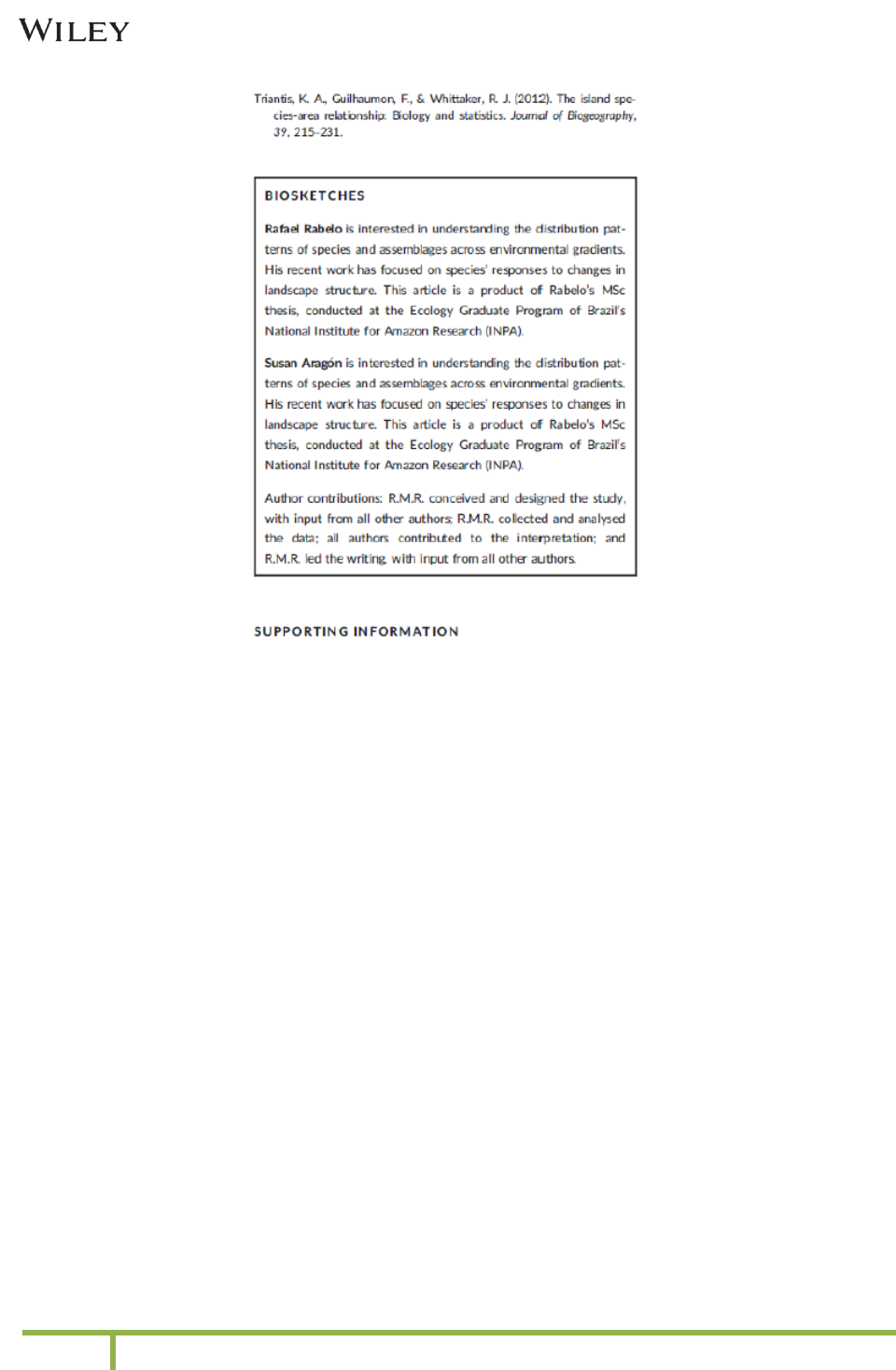
Version 1.3 Wiley Documentation
26
© Wiley
2.31 Supporting Information
• Supporting information should be placed at the end of the article after the References.
• Caption not required as general style, instead insert this standard text:
SUPPORTING INFORMATION
Additional supporting information may be found online in the Supporting Information
section at the end of this article.
• Text citations for supporting information: Figure S1, Table S1, Data S1, etc.
Note: Caption for supporting information is displayed based on journal requirement.
2.32 How to Cite
• The “How to cite” section must be included in all journals for the main article types:
Original article (and similar article types); Review article (and similar article types);
Short communication; Commentary.
• This section would be automatically generated/manually developed by the typesetters.
• Place it after the Supporting Information section.
• Use the following standard format for the journals that have this section:
- Include up to six author names. For more than six authors, display the first three
authors and then add et al. (eg, “Hudson LN, Newbold T, Contu S, et al”).
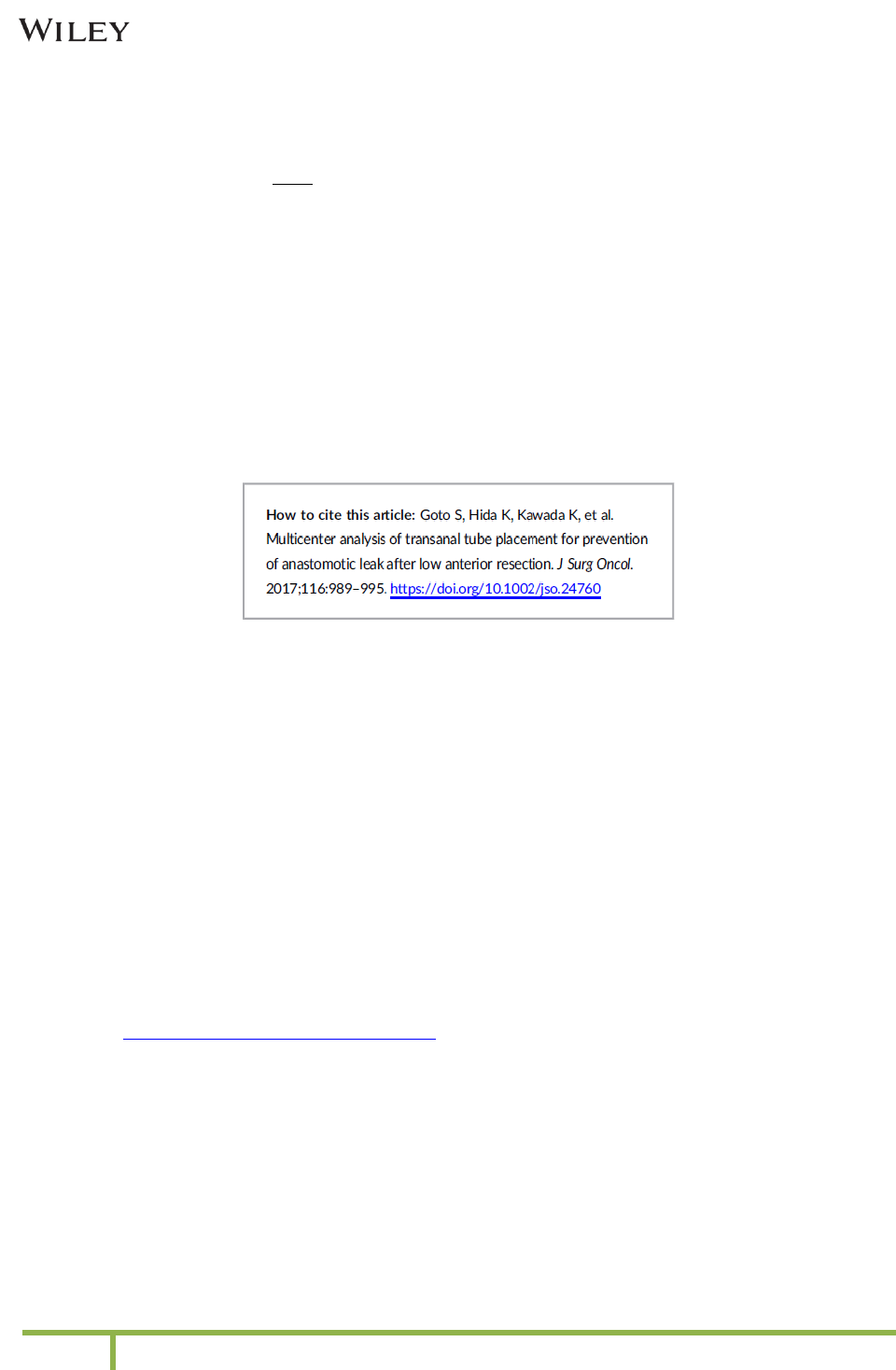
Version 1.3 Wiley Documentation
27
© Wiley
- For hyphenated given names (eg, Yi-Lei Fan and Feng-zhi Zhang), if the name after the
hyphen is in uppercase, then it gets included in the initials, otherwise, only the first
character that is in uppercase will be included. Eg, In Feng-zhi Zhang gets abbreviated
as “Zhang, F" NOT “Zhang, F-z.”
- List authors’ surnames followed by closed-up initials without periods, and use a
comma as a separator between author names (eg, “Hudson LN, Newbold T, Contu S”).
- There is no “and” before the last author name.
- The article title is presented in sentence case; the word after a colon should be
capitalized.
- Journal names are abbreviated (with the exception of single and double-word journal
names).
- There is no terminal period after the URL at the end.
For example:
Articles without an e-locator:
The DOI appears in https:// URL format after the page range (in black without underlining).
For example:
How to cite this article: Tritschler M, Retschnig G, Yañez O, Williams GR, Neumann P.
Host sharing by the honey bee parasites Lotmaria passim and Nosema ceranae. Ecology
and Ecology. 2017;2:1–9. https://doi.org/10.1002/ece3.2796
Articles with an e-locator:
The DOI appears in https:// URL format after the page range (in blue with underlining).
For example:
How to cite this article: López JM, Fortuny G, Puigjaner D, Herrero J, Marimon F,
Garcia–Bennett J. Effects of walking in deep venous thrombosis: A new integrated solid
and fluid mechanics model. Int J Numer Method Biomed Eng. 2016;32:e2819.
https://doi.org/10.1002/cnm.2819
2.33 Appendix (If Applicable)
• The “APPENDIX” heading should be in all caps.
• The APPENDIX should be placed after How to Cite section.
For example:

Version 1.3 Wiley Documentation
28
© Wiley
For more information, refer to AMA Manual of Style, 10th edition, p 36.
2.34 Punctuation
2.34.1 Quotation Marks
Use double quotes; use single quotation marks for quotations within quotations.
Punctuation Within Quotation Marks
• Place the period, question mark, comma, and exclamation point inside the quotation
marks.
• Place colon and semicolon outside the quotation marks.
• Place question marks, dashes, and exclamation points inside quotation marks only when
they are part of the quoted material. If they apply to the whole statement, place them
outside the quotation marks.
For example:
Why bother to perform autopsies at all if the main finding is invariably “edema and
congestion of the viscera”?
The clinician continues to ask, “Why did he die?”
• Do not use quotation marks with yes or no.
For more information, refer to AMA Manual of Style, 10th edition, p 359.
2.34.2 Parentheses and Brackets
• In mathematical expressions, parentheses are placed inside brackets except in cases in
which the formula is within parentheses, in which case the inner parentheses are changed
to brackets.
• Punctuation within parentheses: The period, the question mark, and the exclamation
point are inside the parentheses.
• Parentheses in text: ([ ]): US style
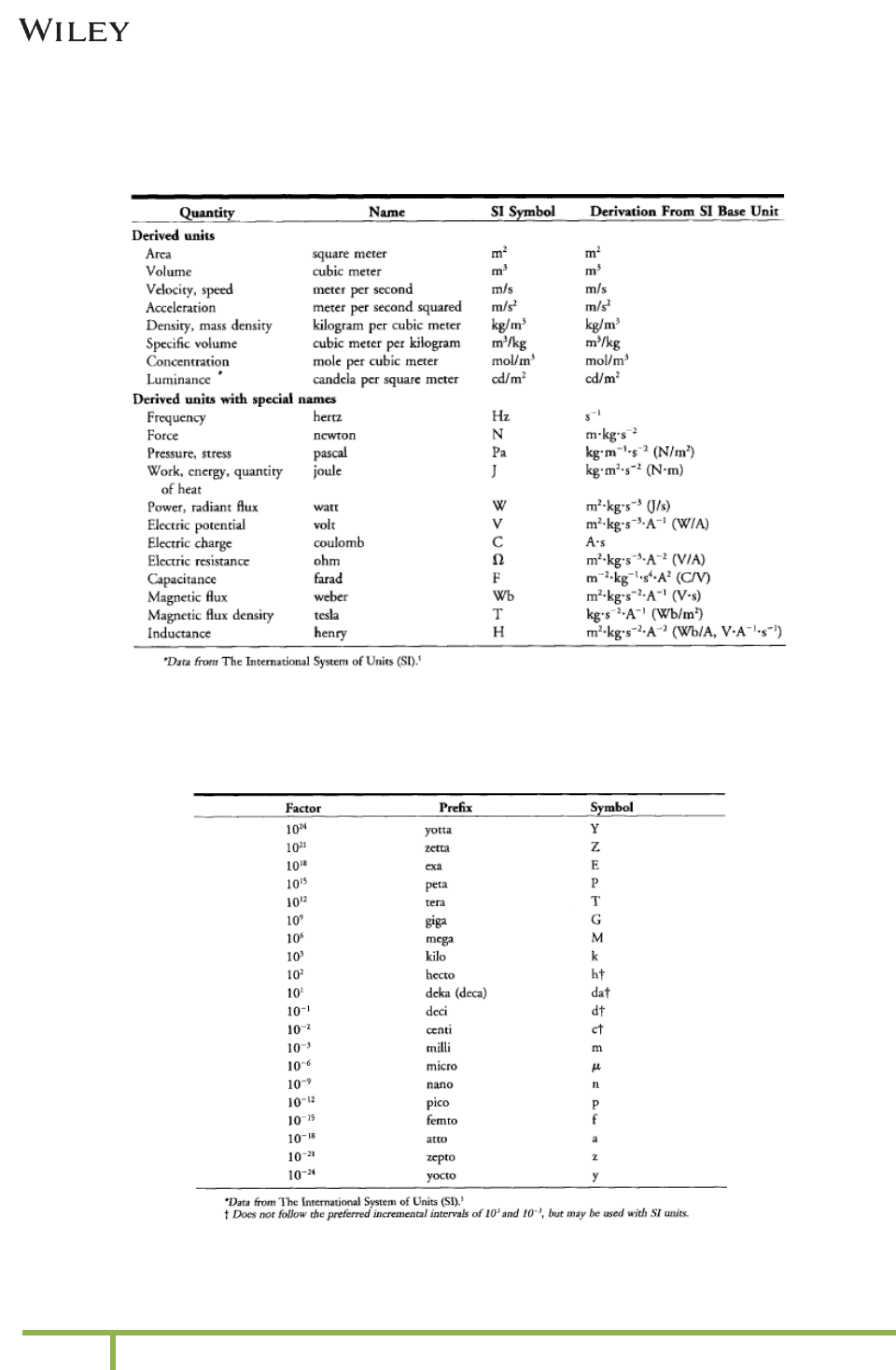
Version 1.3 Wiley Documentation
29
© Wiley
2.35 Units of Measure
2.35.1 SI Derived Units
For more information, refer to AMA Manual of Style, 10th edition, p 519.
2.35.2 SI Prefixes
• 10 mL/L; 5°C; 45° angle.

Version 1.3 Wiley Documentation
30
© Wiley
• The SI unit names are written lowercase (eg, kg).
• Abbreviations or symbols for SI units also are written lowercase, with the following
exceptions:
- Abbreviations derived from a proper name should be capitalized (eg, N for newton, K
for kelvin, A for ampere), although the non-abbreviated SI unit names are not
capitalized (eg, newton, ampere).
- An uppercase letter L is used as the abbreviation for liter to avoid confusion with the
lowercase letter l and the number 1.
- Two SI prefixes, M and P, are capitalized to distinguish them from similar lowercase
abbreviations. The letter M denotes the prefix mega (10
6
), whereas m signifies milli
(10
-3
). Accordingly, the abbreviation mg denotes milligram (10
-3
g), whereas MHz
denotes megahertz (10
6
Hz). The letter P denotes the prefix peta (10
15
), whereas p
signifies pico (10
-12
).
• µg/L or µg L
-1
NOT µg per L.
• Fractions should not be used with SI units. For example: 2.5 kg.
• The abbreviations for second, minute, hour, and day are s, min, h, and d, respectively and
the abbreviations for week, month, and year are wk, mo, and y. These abbreviations
should be used only in tables, line art, and virgule constructions.
• Molarity and Normality closed up to numeral.
2.36 Numbers and Percentages
• Date and time: 11:30 PM on 25 February 1961
• AM and PM should be set as small caps.
• Separate digits with a space, not a comma, to indicate place values beyond thousands
For example:
5034
12 345
615 478
9 473 209
• However, there are exceptions for certain types of numerals that have more than 4 digits.
For instance, spacing is not used for street addresses, postal codes (eg, 5-digit postal
codes), patent numbers, page numbers, or numerals combined with letters (eg, grant
numbers).
• n, indicating sample number, should be roman.
• Spelling out numbers:
- Spell out zero to nine. Here Wiley style deviates from AMA style.
- Use words to express numbers that occur at the beginning of a sentence, title, subtitle,
or heading; for common fractions; for accepted usage and numbers used as pronouns;

Version 1.3 Wiley Documentation
31
© Wiley
for ordinals first through ninth; and when part of a published quotation or title in
which the number is spelled out.
• Percentages:
- Use Arabic numerals and the symbol % for specific percentages.
- The symbol is set close to the numeral and is repeated with each number in a series
or range of percentages. Include the symbol % with a percentage of zero.
For example: 5% to 20%
For more information, refer to AMA Manual of Style, 10th edition, p 794.
2.37 Small Caps
• AM and PM in time.
• BC, BCE, CE, and AD.
• Some prefixes in chemical formulas (L for levo-, D for dextro-).
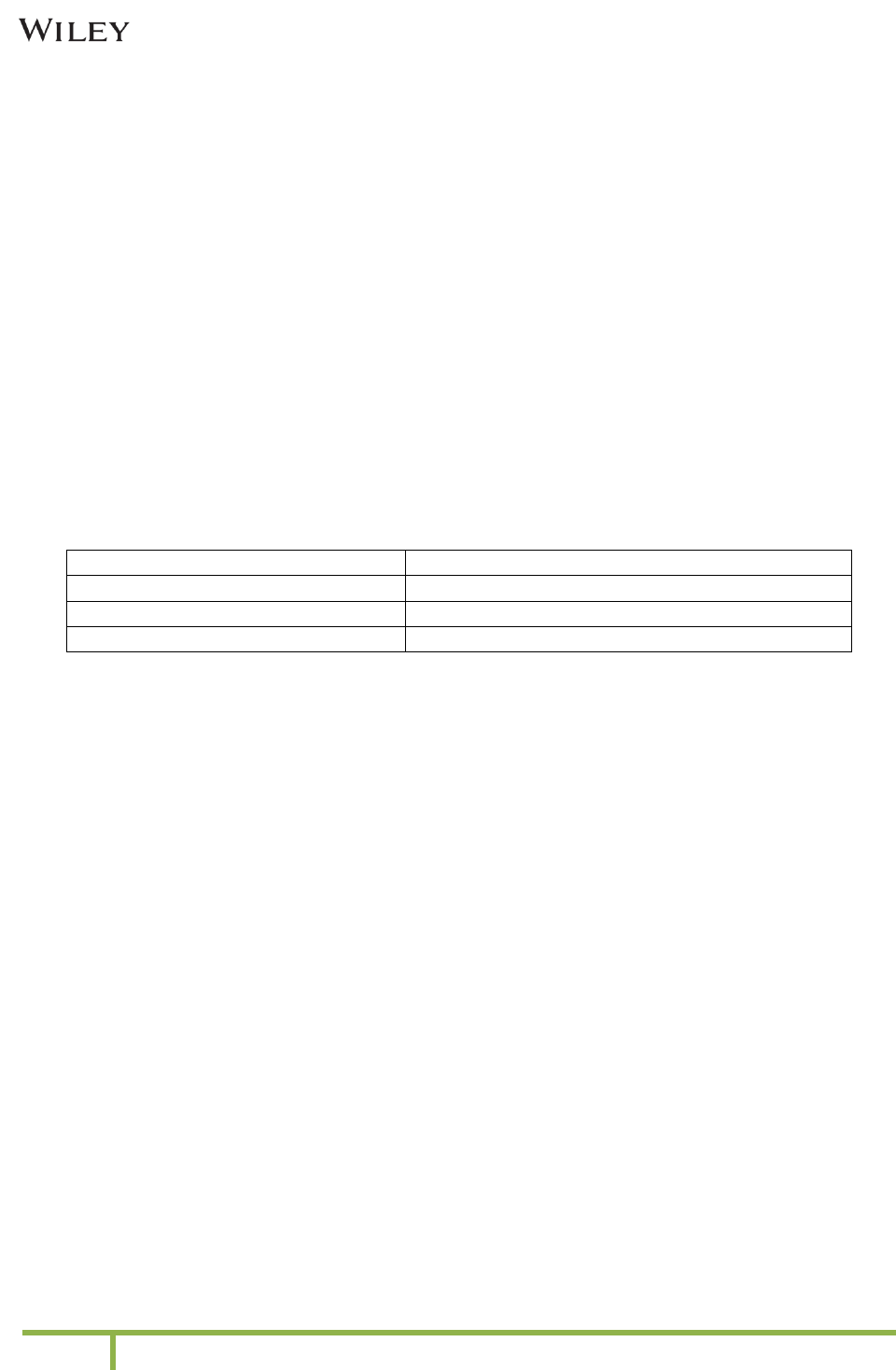
Version 1.3 Wiley Documentation
32
© Wiley
3 Copyediting Level 1
Copyediting Level 1 (CE1) includes both mechanical editing and copyediting according to the
following points, along with structuring and XML tagging. The following points are considered to
constitute the base level of language editing and should be followed for all Wiley AMA journals.
3.1 Mechanical Editing
Refer to section 2.
3.2 Copyediting
3.2.1 Nouns
As modifiers (noun strings)—although in English, nouns are used as modifiers, overuse can lead
to a lack of clarity.
For more information, refer to AMA Manual of Style, 10th edition, p 316.
Avoid
Preferred
diabetes patient
patient with diabetes; diabetic patient
depression episode
depressive episode; episode of depression
elderly over-the-counter drug users
elderly users of over-the-counter drugs
3.2.2 Pronouns
Avoid: The American Medical Association is having their annual meeting in June in Chicago, Ill.
Better: The American Medical Association is having its annual meeting in June in Chicago, Ill.
For more information, refer to AMA Manual of Style, 10th edition, p 317.
Personal Pronouns
Wrong: George, Patricia, and myself attended the lecture.
Correct: George, Patricia, and I attended the lecture.
Relative Pronouns
Avoid: This morning he revealed evidence that calls the breast cancer study’s integrity into
question has been verified.
Better: This morning he revealed that evidence has been verified that calls the breast cancer
study’s integrity into question.
3.2.3 Verbs
Voice
Avoid: Data were collected from 5000 patients by physicians.
Better: Physicians collected data from 5000 patients.
Mood

Version 1.3 Wiley Documentation
33
© Wiley
Past form: If we were to begin treatment immediately, the patient’s prognosis would be
excellent.
Present form: The patient insisted that she be treated immediately so that her prognosis would
be excellent.
3.2.4 Tense
Incorrect: I found it difficult to accept Dr Smith’s contention in chapter 3 that the new agonist
has superior pharmacokinetics and was therefore more widely used.
Correct: I found it difficult to accept Dr Smith’s contention in chapter 3 that the new agonist has
superior pharmacokinetics and is therefore more widely used.
• Double Negatives: Two negatives used together constitute a double negative.
- Incorrect: I can’t hardly keep penicillin in stock.
• Split Infinitives
- Ambiguous: Don vowed to promote exercising vigorously. (Is it the exercising or the
promotion of exercising that is vigorous?)
- Clearer: Don vowed to vigorously promote exercising.
For more information, refer to AMA Manual of Style, 10th edition, p 320.
3.2.5 Subject-Verb Agreement
The subject and verb must agree; use a singular subject with a singular verb and a plural subject
with a plural verb.
Intervening Phrase
• Plural nouns take plural verbs and singular nouns take singular verbs, even if a plural
phrase follows the subject.
For example:
A review of all patients with grade 3 tumors was undertaken in the university hospital.
(Remember, the subject in this sentence is review. Ignore all modifying prepositional
phrases that follow a noun when determining verb agreement.)
• Units of measure are treated as collective singular (not plural) nouns and require a
singular verb.
False Singulars
Singular: Each news medium shapes journalism to its own constraints.
Plural: The media give great attention to the managed care debate. (Here media refers to
television and newspaper coverage.)
False Plurals
Some nouns, by virtue of ending in a “plural” -s form, are mistakenly taken to be plurals even
though they should be treated as singular and take a singular verb (eg, measles, mumps,
mathematics, genetics).

Version 1.3 Wiley Documentation
34
© Wiley
Collective Nouns
• The couple has a practice in rural Montana. (Couple is considered a unit here and so takes
the singular verb.)
• Twenty percent of her time is spent on administration. (Twenty percent is thought of as
a unit, not as 20 individual units, and so takes the singular verb.)
• The paramedic crew responds to these emergency calls. (Crew is thought of as a unit here
and so takes the singular verb.)
Compound Subject
Both plural: Neither staphylococci nor streptococci were responsible for the infection.
Both singular: Neither a false-positive test nor a false-negative test is a definitive result.
Mixed: Neither the hospital nor the physicians were responsible for the loss.
Shift in Number of Subject and Resultant Subject-Verb Disagreement
Incorrect: Her tests were run and her chart updated.
Correct: Her tests were run and her chart was updated.
Incorrect: The diagnosis was made and physical therapy sessions begun.
Correct: The diagnosis was made and physical therapy sessions were begun.
Subject and Predicate Nominative Differ in Number
Incorrect: The most significant factor that affected the study results were interhospital
variations in severity of illness.
Correct: The most significant factor that affected the study results was interhospital variations
in severity of illness.
Indefinite Pronouns
Singular referent: Some of my time is spent wisely.
Plural referent: Some of his calculations are difficult to follow.
3.2.6 Comma
Use a Comma
Description
Example
After opening dependent clauses (whether
restrictive or not) or long opening adverbial
phrases
If the infection recurs within two weeks, an
additional course of antibiotics should be
given.
To set off nonrestrictive subordinate clauses
The delegates, attaining consensus, passed
the resolution.
To avoid an ambiguous or awkward
juxtaposition of words
Outside, the ambulance siren shrieked.
To set off appositives
Two colleagues, John Smith and Perry
White, worked with me on this study.
To set off ie, eg, viz, and the expanded
equivalents (that is, for example, namely)
The use of standardized scores, eg, z
scores, has no effect on statistical
comparisons.
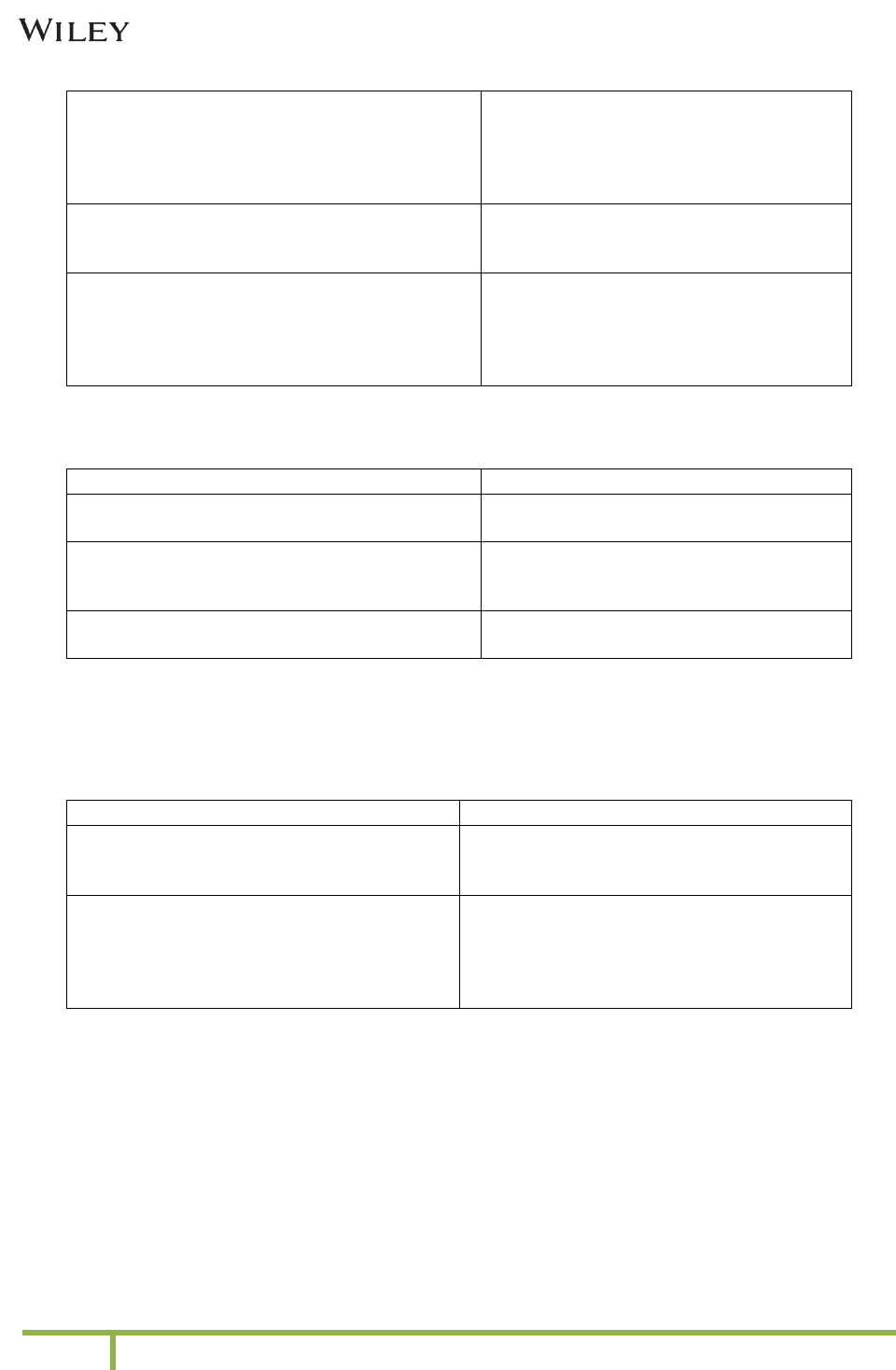
Version 1.3 Wiley Documentation
35
© Wiley
To separate main clauses joined by coordinating
conjunctions (and, but, or, nor, for, so, yet)
Plasma lipid and lipoprotein
concentrations were unchanged after low-
intensity training, but high-intensity
training resulted in a reduction in
triglyceride levels.
Clauses introduced by yet and so and
subordinating conjunctions (eg, while, where,
since, after, whereas) are preceded by a comma
The samples were stored at -7O°C, after the
proteins had denatured
To set off parenthetical words, phrases,
questions, and other expressions that interrupt
the continuity of a sentence (eg, therefore,
moreover, on the other hand, of course,
nevertheless, after all, consequently)
We should take care not to make the
intellect our god; it has, of course, powerful
muscles, but no personality.
Do Not Use a Comma
Description
Example
Commas are not used when the month and year
are given without the day
The events of December 1941 have
received intense historical scrutiny.
In accordance with SI convention, separate digits
with a space, not a comma, to indicate place
values beyond thousands
12 345
Do not use a comma between two units of the
same dimension
3 years 4 months old
For more information, refer to AMA Manual of Style, 10th edition, p 336.
3.2.7 Semicolon
Use a Semicolon
Description
Example
To separate independent clauses in a
compound sentence when no connective
word is used
The conditions of 52% of the patients
improved greatly; 4% of the patients
withdrew from the study.
Between main clauses joined by a conjunctive
adverb (eg, also, besides, furthermore, then,
however, thus, hence, indeed, yet) or a
coordinating conjunction (and, but, or, nor,
for, so, yet)
The word normal is often used loosely;
indeed, it is not easily defined.
For more information, refer to AMA Manual of Style, 10th edition, p 341.
3.2.8 Colon
Use a Colon
• To introduce a formal or extended quotation.
• To introduce an enumeration, especially after anticipatory phrasing such as thus and as
follows.
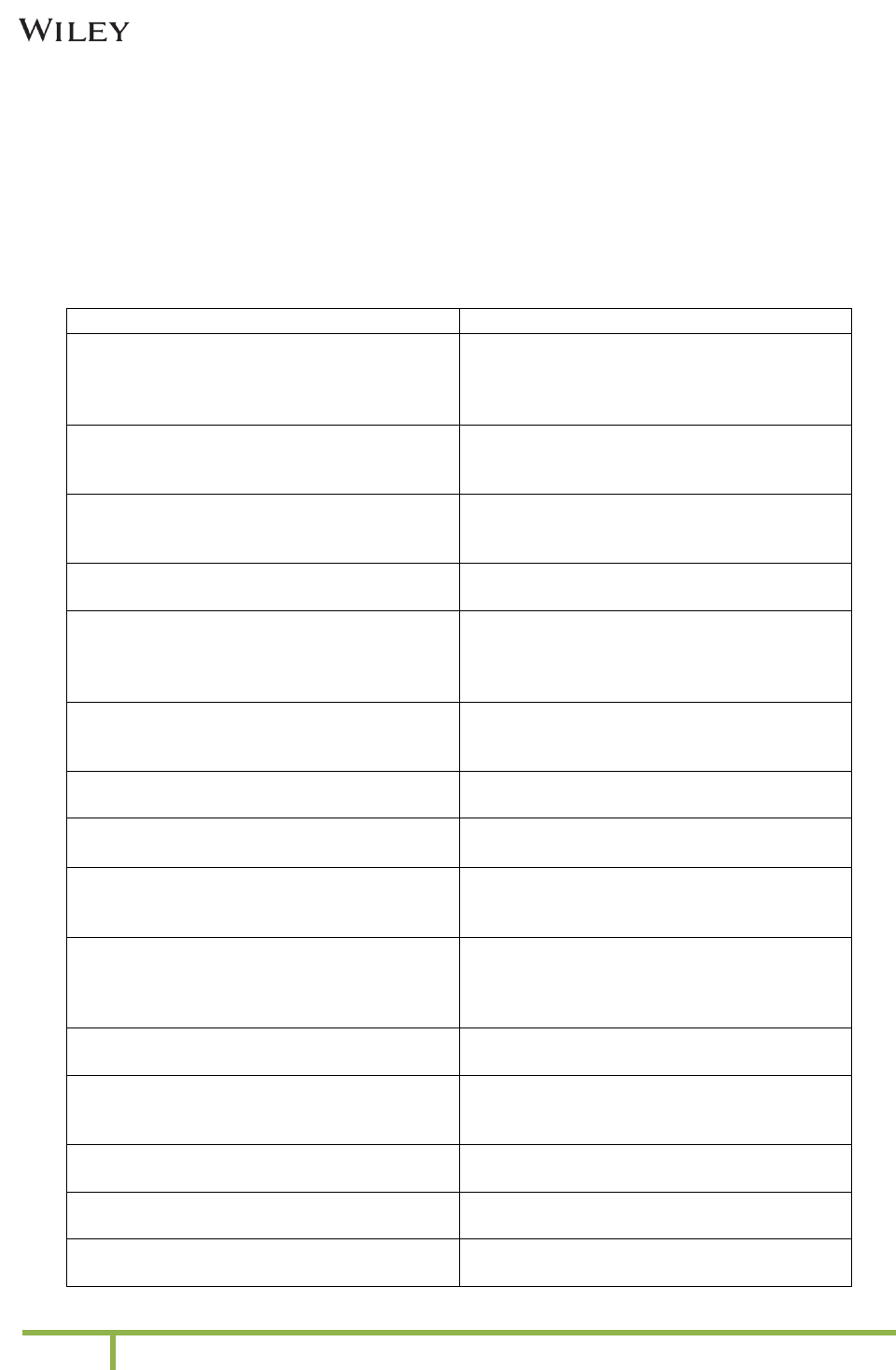
Version 1.3 Wiley Documentation
36
© Wiley
Do Not Use a Colon
• If the sentence is continuous without it.
• To separate a preposition from its object or a verb.
For more information, refer to AMA Manual of Style, 10th edition, p 342.
3.2.9 Hyphenation
Description
Example
Hyphenate a compound that contains a noun
or an adverb and a participle that together
serve as an adjective if they precede the noun
but not if they follow the noun
decision-making methods (But: methods of
decision making)
Hyphenate a compound adjectival phrase
when it precedes the noun it modifies but not
when it follows the noun
end-to-end anastomosis (But: The
anastomosis was end to end.)
Hyphenate an adjective-noun compound
when it precedes and modifies another noun
but not when it follows the noun
upper-class values (But: Values were upper
class.)
In most instances, middle-, high-, and low-.
adjectival compounds are hyphenated
36-year-old baseball player
For compound adjectival phrases, adverb-
participle compounds, and adjective-noun
compounds that have become commonplace
and familiar in everyday usage
long-term therapy; the commitment was long-
term
Hyphenate a combination of two nouns used
coordinately as a unit modifier when
preceding the noun but not when following
albumin-globulin ratio (But: ratio of albumin
to globulin)
Hyphenate a combination of two nouns of
equal participation used as a single noun
player-manager; soldier-statesman; actor-
director; author-critic physician-poet
Hyphenate most compound nouns that
contain a preposition
tie-in; tie-up; go-between;hand-me-down;
looker-on
Hyphenate a compound in which a number is
the first element and the compound precedes
the noun it modifies
18-factor blood chemistry analysis; 2-way
street; ninth-grade reading level
Hyphenate two or more adjectives used
coordinately or as conflicting terms whether
they precede the noun or follow as a predicate
adjective
We performed a double-blind study. The test
we used was double-blind.
Hyphenate color terms in which the two
elements are of equal weight
blue-gray eyes; blue-black lesions NOT bluish
gray lesions
Hyphenate compounds formed with the
prefixes all, self-, and ex- whether they
precede or follow the noun
self-assured salesperson; all-powerful ruler
Hyphenate compounds made up of the
suffixes -type, -elect, and -designate
Hodgkin-type lymphoma; chair-elect;
secretary-designate
Hyphenate contemporary adjectival cross-
compounds
cross-country race; cross-city competition
Hyphenate adjectival compounds with quasi
quasi-legislative group; quasi-diplomatic
efforts
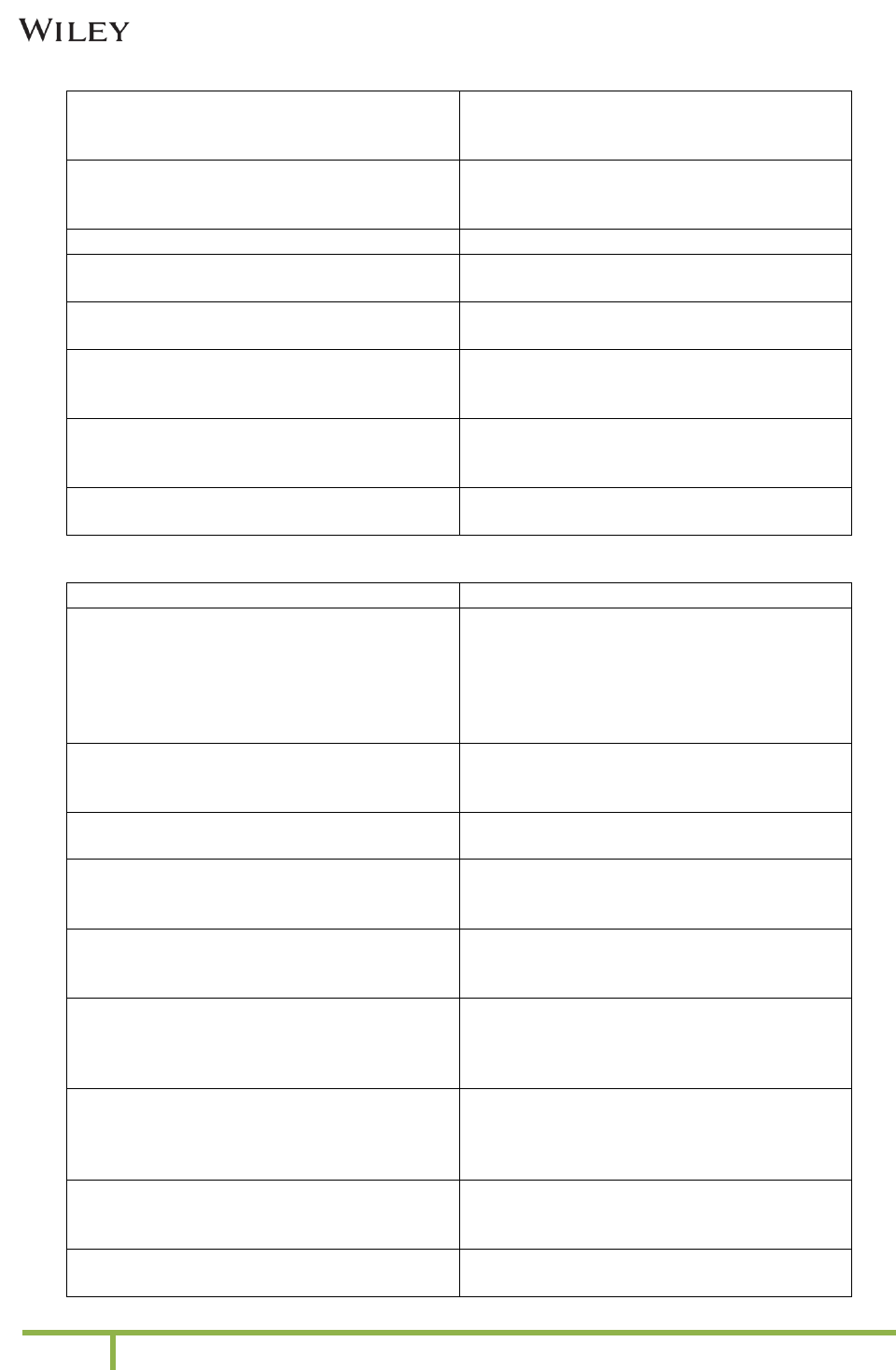
Version 1.3 Wiley Documentation
37
© Wiley
Hyphenate all prefixes that precede a proper
noun, a capitalized word, a number, or an
abbreviation
anti-American demonstration; pro-Israeli
forces; pre-AIDS era; pseudo-Christian; post-
1945 clothing
Hyphenate compound numbers from 21 to 99
and compound cardinal and ordinal numbers
when written out
Thirty-six patients were examined.
Hyphenate fractions used as adjectives
A two-thirds majority was needed.
When expressing dimensions, use hyphens
and spacing
in a 10- to 14-day period
A hyphen may be used to join two spelled-out
units of measure.
pascal-second
A hyphen is used to join a unit of measure and
the number associated with it when the
combination is used as an adjective
an 8-L container
Retain the hyphen when the term after the
prefixes anti-, neo-, pre-, post-, and mid- is a
proper noun or a number
mid-1900s, mid-Atlantic crossing
Hyphenate spelled-out common fractions
used as nouns.
Three-fourths of the questionnaires were
returned.
3.2.9.1 When Not to Use Hyphens
Description
Example
The following common prefixes are not joined
by hyphens except when they precede a
proper noun, a capitalized word, or an
abbreviation: anti-, re-, over-, co-, trans-, mid-,
non-, and post-
antimicrobial; repossess; overproduction;
coworker; transsacral; midaxillary;
nonresident; coidentity; postoperative;
nonnegotiable; posttraumatic; coauthor;
coexistence; ultramicrotome;
underrepresented
Suffixes without a hyphen: -hood, -like, -less,
and -wise
womanhood; manhood; catatoniclike;
shoeless; barklike; clockwise
Do not hyphenate names of disease entities
used as modifiers
grand mal seizures; hyaline membrane
disease; basal cell carcinoma; sickle cell trait
Do not use a hyphen after an adverb that ends
in-ly even when used in a compound modifier
preceding the word modified
the clearly stated purpose
a highly developed species
Do not hyphenate names of chemical
compounds used as adjectives
sodium chloride solution
tannic acid test
Most combinations of proper adjectives
derived from geographic entities are not
hyphenated
Central Americans; African American; Pacific
Rim countries; Far Eastern customs;
Southeast Asia; Mexican American; Central
American customs; Latin Americans
Do not hyphenate Latin expressions or non-
English-language phrases used in an
adjectival sense.
an a priori argument
prima facie evidence
an ex officio member
in vivo specimens
Do not hyphenate modifiers in which a letter
or number is the second element
grade A eggs
study 1 protocol
type 1 diabetes
Noun compounds formed with quasi are not
hyphenated.
quasi diplomat
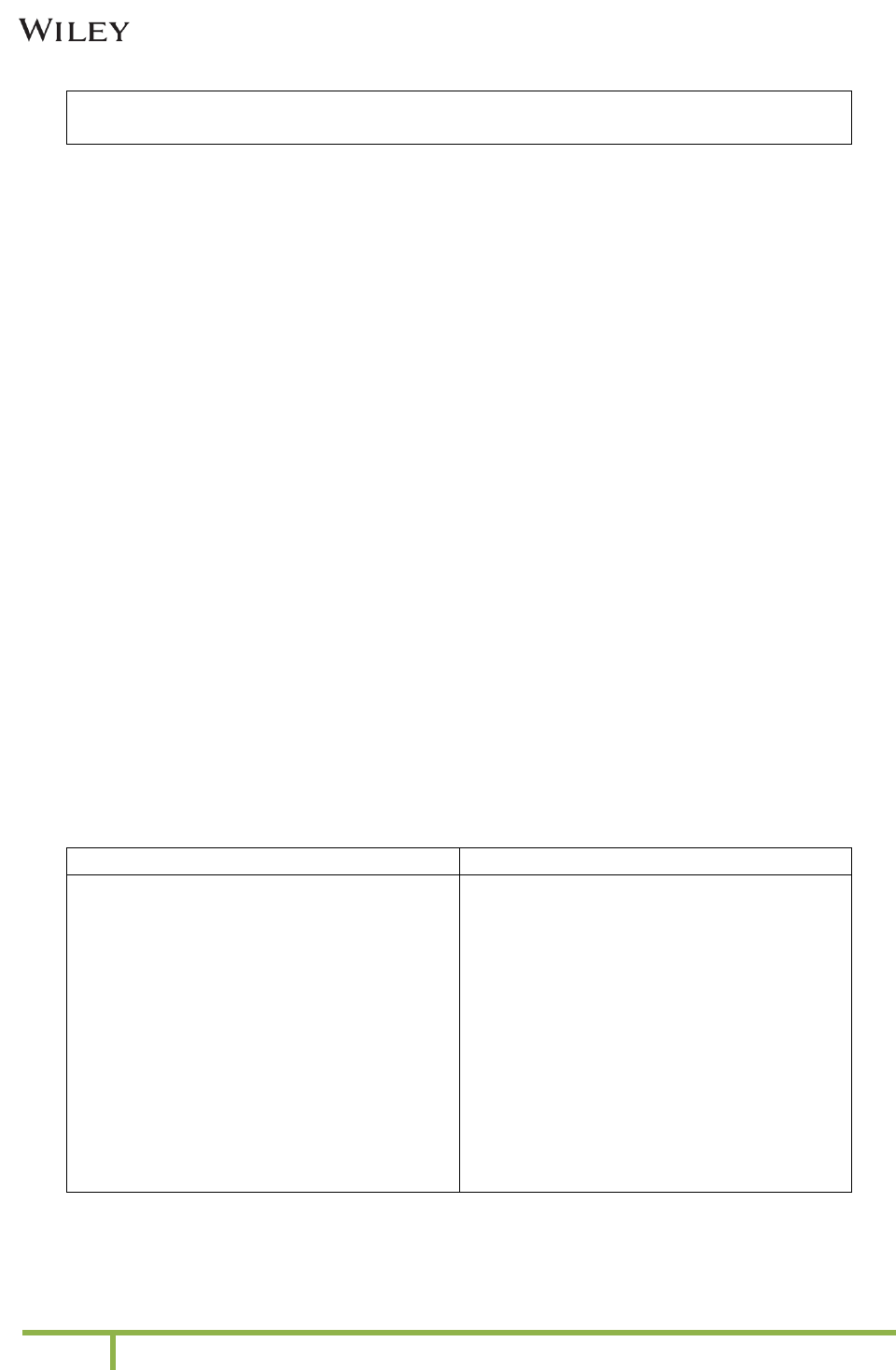
Version 1.3 Wiley Documentation
38
© Wiley
Note: With the prefix vice, follow latest edition of Stedman’s or Dorland’s medical dictionary or
Merriam-Webster’s Collegiate Dictionary.
For more information, refer to AMA Manual of Style, 10th edition, p 344.
3.2.10 Dashes
Em Dash
An em dash may be used to separate a referent from a pronoun that is the subject of an ending
clause.
For example:
All of these factors—age, severity of symptoms, psychic preparation, and choice of
anesthetic agent—determine the patient’s reaction.
En Dash
The en dash shows relational distinction in a hyphenated or compound modifier, one element of
which consists of two words or a hyphenated word, or when the word being modified is a
compound.
• For example:
- Winston-Salem–oriented group
- physician-lawyer–directed section
- anti–basement membrane glomerulonephritis
- phosphotungstic acid–hematoxylin stain
For more information, refer to AMA Manual of Style, 10th edition, p 352.
3.2.11 Slash (Virgule, Solidus)
Use a slash
Do not use a slash
in the “per” construction only when (1)
the construction involves units of
measure (including time) and (2) at least
one element includes a specific numerical
quantity and (3) the element immediately
adjacent on each side is either a specific
numerical quantity or a unit of measure.
For example:
The hemoglobin level was 140 g/L.
The CD4
+
cell count was 0.20 × 10
9
/L
(200/µL).
Blood volume was 80 mL/kg of body
weight.
in a “per” construction (1) when a
prepositional phrase intervenes between
the two elements, (2) when neither
element contains a specific numerical
quantity, or (3) in nontechnical
expressions.
For example:
4.5 mmol of potassium per liter
(Avoid: 4.5 mmol/L of potassium; instead
reword: a potassium concentration of 4.5
mmol/L)
For more information, refer to AMA Manual of Style, 10th edition, p 353.

Version 1.3 Wiley Documentation
39
© Wiley
3.2.12 Apostrophe
• Use the apostrophe to show the possessive case of nouns and indefinite pronouns.
For example: Jones’ bones
• Do not use -’s with possessive pronouns: his, hers, ours, its, yours, theirs, whose.
For example: The car is hers.
• Use -’s after only the last word of a compound term. For example: father-in-law’s tie.
• Do not use an apostrophe to form the plural of an all-capital abbreviation or of numerals.
For example: ECGs, EEGs, IQs, WBCs, RBCs
For more information, refer to AMA Manual of Style, 10th edition, p 362.
3.2.13 Ellipses
• Ellipses are three spaced dots (…) generally used to indicate the omission of one or more
words, lines, paragraphs, or data from quoted material.
For more information, refer to AMA Manual of Style, 10th edition, p 364.
3.2.14 Latin and Greek Versus English
• Follow the latest edition of Merriam-Webster’s Collegiate Dictionary or Stedman’s or
Dorland’s medical dictionary.
3.2.15 Capitalization
Capitalize
• Capitalize proper nouns and words derived from proper nouns.
• Capitalize geographic names for cities, townships, counties, states, countries, continents,
islands, peninsulas, straits, bodies of water, mountain chains, streets, parks, forests,
canyons, dams, specific locations, accepted designations for regions, and political
divisions.
• When a common noun is capitalized in the singular as part of a proper name or in a title,
it is generally not capitalized in the plural.
For example: Mississippi and Missouri rivers; Atlantic and Pacific oceans.
• Expanded compass directions are not capitalized.
For example: southern France, northern Illinois
• Nouns and adjectives derived from compass directions should not be capitalized.
For example: midwesterner; southern-style cooking
• Capitalize proper names of languages, peoples, races, political parties, religions, and
religious denominations and sects.
• Capitalize the names of historical events and periods, special events, awards, treaties, and
official names and specific parts of adopted laws and bills.

Version 1.3 Wiley Documentation
40
© Wiley
• When an eponym is included in the name of a disease, syndrome, sign, position, or similar
designation, capitalize the eponym but not the common noun.
For example: Raynaud disease, Babinski sign, Marfan syndrome.
• Capitalize trademarks and proprietary names of drugs and brand names of manufactured
products and equipment.
• Do capitalize phylum, class, order, family, and tribe.
• Capitalize the formal name of a genus when it is used in the singular, with or without a
species name.
• Capitalize the designations of specific deities and personifications.
• Capitalize recognized holiday and calendar events.
• The exact and complete titles of tests and subscales of tests should be capitalized. The
word test is not usually capitalized except when it is part of the official name of the test.
Always verify exact names of any tests with the author or with reference sources.
For example: Goodenough-Harris Drawing Test
(See AMA Manual of Style, 10th edition, p. 377.)
• Capitalize the title of a person when it precedes the person’s name but not when it follows
the name.
For example: Chair John W. Smith; John W. Smith was named chair.
• Capitalize academic degrees when they are abbreviated.
• Capitalize the official titles of conferences, congresses, postgraduate courses,
organizations, institutions, business firms, and governmental agencies, as well as their
departments and other divisions.
• In titles and headings, capitalize two-letter verbs.
For example: Go, Do, Am, Is, Be.
• With dual verbs, such as follow up, capitalize both parts in a title.
For example: Following Up the Diabetic Patient.
• Capitalize the first letter of the word that follows a lowercase Greek letter (but not a
capital one), a symbol, italicized organic chemistry prefixes trans- and cis-, or a small
capital letter in titles, subtitles, table heads, center heads, side heads, and line art.
For example: trans-Fatty Acid Content of Common Foods; 1,25-
Dihydroxycholecalciferol.
• Non-English words should be capitalized.
• In titles, subtitles (except in references), centered heads, side heads, table column heads,
and line art and at the beginning of sentences, the first non-Greek letter after a lowercase
Greek letter should be capitalized.
For example: Liver Disease in α
1
-Antitrypsin Deficiency
Do Not Capitalize
• Do not capitalize the common nouns that follow designations.

Version 1.3 Wiley Documentation
41
© Wiley
• Do not capitalize political doctrines.
• Do not capitalize white or black as a designation of race.
• Do not capitalize generic names or descriptive terms.
• Do not capitalize the name of a species, variety, or subspecies.
• Do not capitalize the names of the seasons.
• In institution names, do not capitalize the unless it is part of the official title.
• In title, do not capitalize a coordinating conjunction, article, or preposition of three letters
or fewer.
• Do not capitalize the second part of a hyphenated compound.
• Do not capitalize the words from which an acronym or initialism is derived.
For example: prostate-specific antigen (PSA).
For more examples, please see AMA Manual of Style, 10th edition, chapter 10.
3.2.16 Italics
• Non-English words and phrases: Words that do not appear in the most recent edition of
Merriam-Webster’s Collegiate Dictionary or in standard medical dictionaries should be
italicized.
• Non-English names of streets (addresses), buildings, organizations, or government
institutions should not be italicized or abbreviated.
3.2.17 Abbreviations
• Academic degrees and honors: Academic degrees are abbreviated in bylines and in the
text. These abbreviations are used only with the full name of a person.
For example: ART (accredited record technician); DMSc (doctor of medical science).
• Military services and titles: Military titles and abbreviations should be verified with the
author.
For example: MC, USA (Medical Corps, US Army); USAF, MC (Medical Corps, US Air
Force); GEN (General); LTG (Lieutenant General).
• Abbreviations for eras are set in small capitals with no punctuation.
• Use the following abbreviations when complete local addresses are given.
Air Force Base
AFB
Place
Pl
Army Post Office
APO
Post Office
PO
Avenue
Ave
Road
Rd
Boulevard
Blvd
Route
Rte
Building
Bldg
Rural Free Delivery
RFD
Circle
Cir
Rural Route
RR

Version 1.3 Wiley Documentation
42
© Wiley
court
Ct
Saint
St or Ste
Drive
Dr
South
S
East
E
Southeast
SE
Fleet Post Office
FPO
Southwest
SW
Fort
Ft
Square
Sq
Highway
Hwy
Street
St
Lane
Ln
Terrace
Terr
Mount
Mt
West
W
North
N
Northwest
NW
Northeast
NE
Parkway
Pkwy
• Do not abbreviate the non-English counterparts of the aforementioned designators (eg,
boulevard, rue, Strasse, Platz).
• When the plural form is used, do not abbreviate it (eg, Broad and Vine streets).
• When a street number is not given, do not abbreviate (eg, National Hospital for Neurology
and Neurosurgery, Queen Square, London WClN 3BG, England).
• Do not abbreviate room, suite, department, or division.
• Do not use periods or commas with N, S, E, W, or their combinations
• US states, territories, and possessions; provinces; and countries:
- Names of US states, territories, and-possessions should be spelled out in full when
they stand alone.
- Use postal codes in reference citations and lists.
- Do not abbreviate a state name after a county name.
For example:
Chicago, Ill.
Chicago, IL 606
Cook County, Illinois
• The abbreviation “US” may be used as a modifier (ie, only when it directly precedes the
word it modifies) but should be expanded to “United States” in all other contexts.
• Canadian city names should be followed by the province name (eg, London, Ontario, not
London, Canada). Province names are not abbreviated.
• Senior and Junior are abbreviated when they are part of a name, with no commas.
• President is not abbreviated. It is capitalized when it precedes a name and set lowercase
when following a name.
• The following social titles are always abbreviated when preceding a surname, with or
without the first name or initials: Dr, Mr, Messrs, Mrs, Mmes, Ms, and Mss.
• In the text, do not abbreviate a business term if the company spells it out (eg, Sandoz
Pharmaceuticals Corporation.
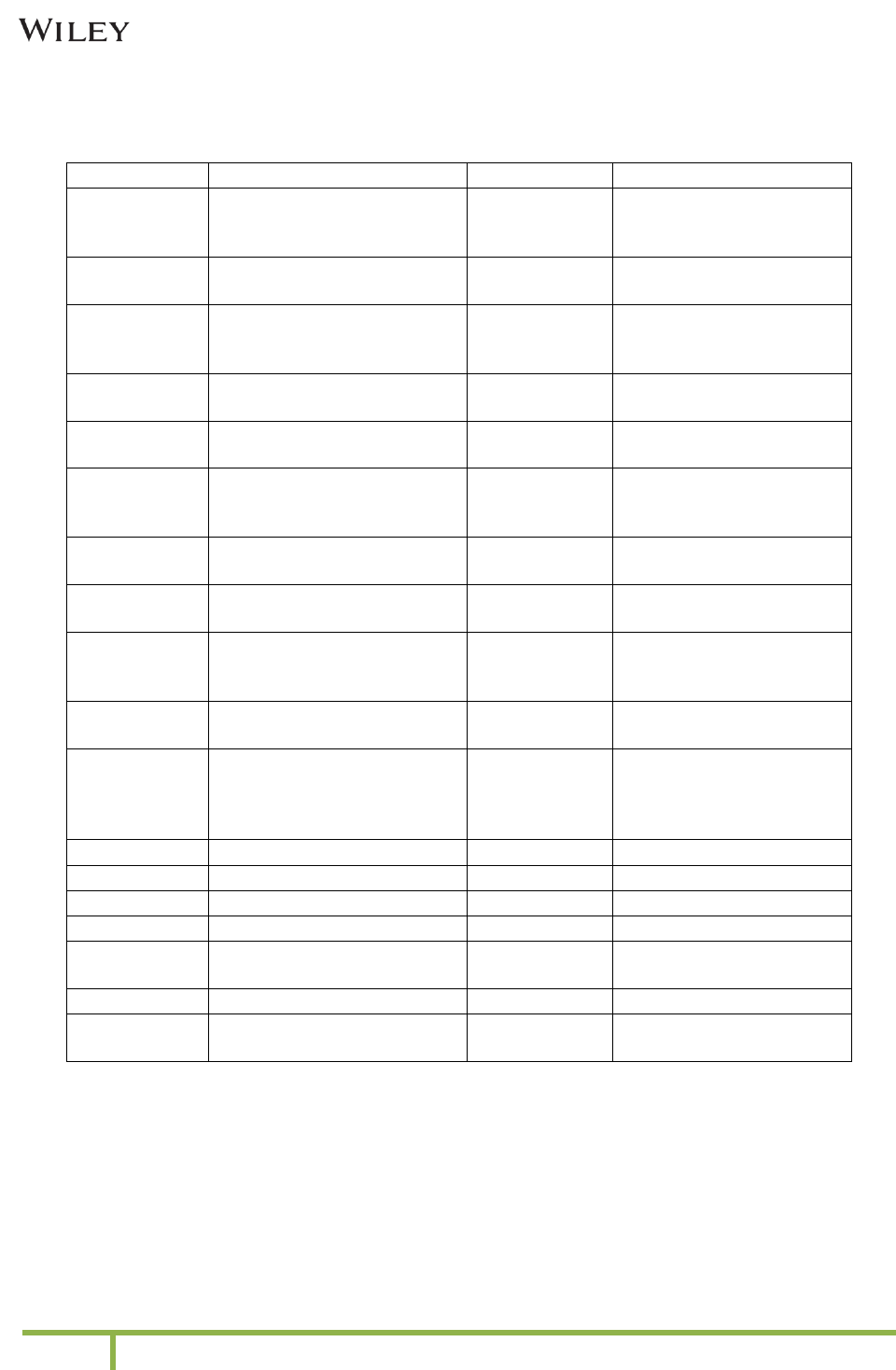
Version 1.3 Wiley Documentation
43
© Wiley
• The following abbreviations do not need to be defined; follow the author:
Abbreviation
Expanded form
Abbreviation
Expanded form
CD
clusters of differentiation
(use with a number, eg, CD4
cell)
DOS
disk operating system
CD
compact disc
EDTA
ethylenediaminetetraaceti
c acid
CD-ROM
compact disc read-only
memory
F
French (add catheter; use
only with a number, eg,
12F catheter)
DDT
dichlorodiphenyltrichloroeth
ane (chlorophenothane)
HLA
human leukocyte antigen
(say “HLA antigen)
DNA
deoxyribonucleic acid
ISBN
International Standard
Book Number
ISSN
International Standard Serial
Number
m-
meta- (use only in
chemical formulas or
names)
Nd:YAG
neodymium:yttrium-
aluminum-garnet
o-
ortho- (use only in
chemical formulas)
OD
oculus dexter (right eye)
(use only with a number)
os
oculus sinister (left eye)
(use only with a number)
OU
oculus unit as (both eyes) or
oculus uterque (each eye)
(use only with a number)
p-
para- (use only in chemical
formulas or names)
PaCO
2
partial pressure of carbon
dioxide, arterial
PaO
2
partial pressure of oxygen,
arterial
PCO
2
partial pressure of carbon
dioxide
pH
hydrogen ion
concentration; negative
logarithm of hydrogen ion
activity
PO
2
partial pressure of oxygen
RAM
random access memory
RNA
ribonucleic acid
ROM
read-only memory
SD
standard deviation
SE
standard error
SEM
standard error of the mean
ssc
standard saline citrate
SSPE
sodium chloride, sodium
phosphate, EDTA (buffer)
TNM
tumor, node, metastasis
ul
uniformly labeled
UV
ultraviolet
UV-A/B/C
Ultraviolet A/B/C
VDRL
Venereal Disease Research
Laboratory (add test)
3.2.18 Nomenclature
Abbreviations for types of multiple endocrine neoplasia (MEN) feature Arabic numerals and a
space.
For example: MEN 2A
Cardiology
• The main deflections of the ECG are named in an alphabetical sequence (P, Q, R, S, T, U);

Version 1.3 Wiley Documentation
44
© Wiley
other deflections use initial letters of the entity being described.
• Capital letters are used to describe ECG deflections in general.
For example:
Improper paper speed will spuriously alter the QRS configuration (not qrs
configuration).
• The jugular venous pulse contours are expressed with italic single letters and roman
words.
For example: a wave (atrial)
• An ejection fraction is expressed as a number, not as a percentage.
For example: 0.60, not 60%.
Drugs
AMA publications do not use the trademark symbol (TM) because capitalization indicates the
proprietary nature of the name.
Radioactive Isotopes
• The expanded terms for radioactive isotopes are used in AMA journals.
• The abbreviation “ul” (for “uniformly labeled”) may be used without expansion in
parentheses.
For example: [
14
C]glucose (ul)
Equipment, Devices, and Reagents
Information regarding the manufacturer or supplier is important, and authors should include this
information in parentheses after the nonproprietary name or description.
UPDATE: AMA does no longer require the inclusion of the location of the manufacturer because
whoever desires more specific details can easily find them online (AMA Manual of Style, 10th
edition, section 15.5).
Genetics
Human genes should be italicized; gene products (proteins) should be in roman type.
• Nerves
- Use roman numerals or English names when designating cranial nerves.
For example:
Cranial nerves III, IV, and VI are responsible for ocular movement.
- Use ordinals when the numeric adjectival form is used.
For example:
The third, fourth, and sixth cranial nerves are responsible for ocular movement.
- The alphanumeric terms need not be expanded.
For example: C2-3 disk.
• Microorganisms: Italicize
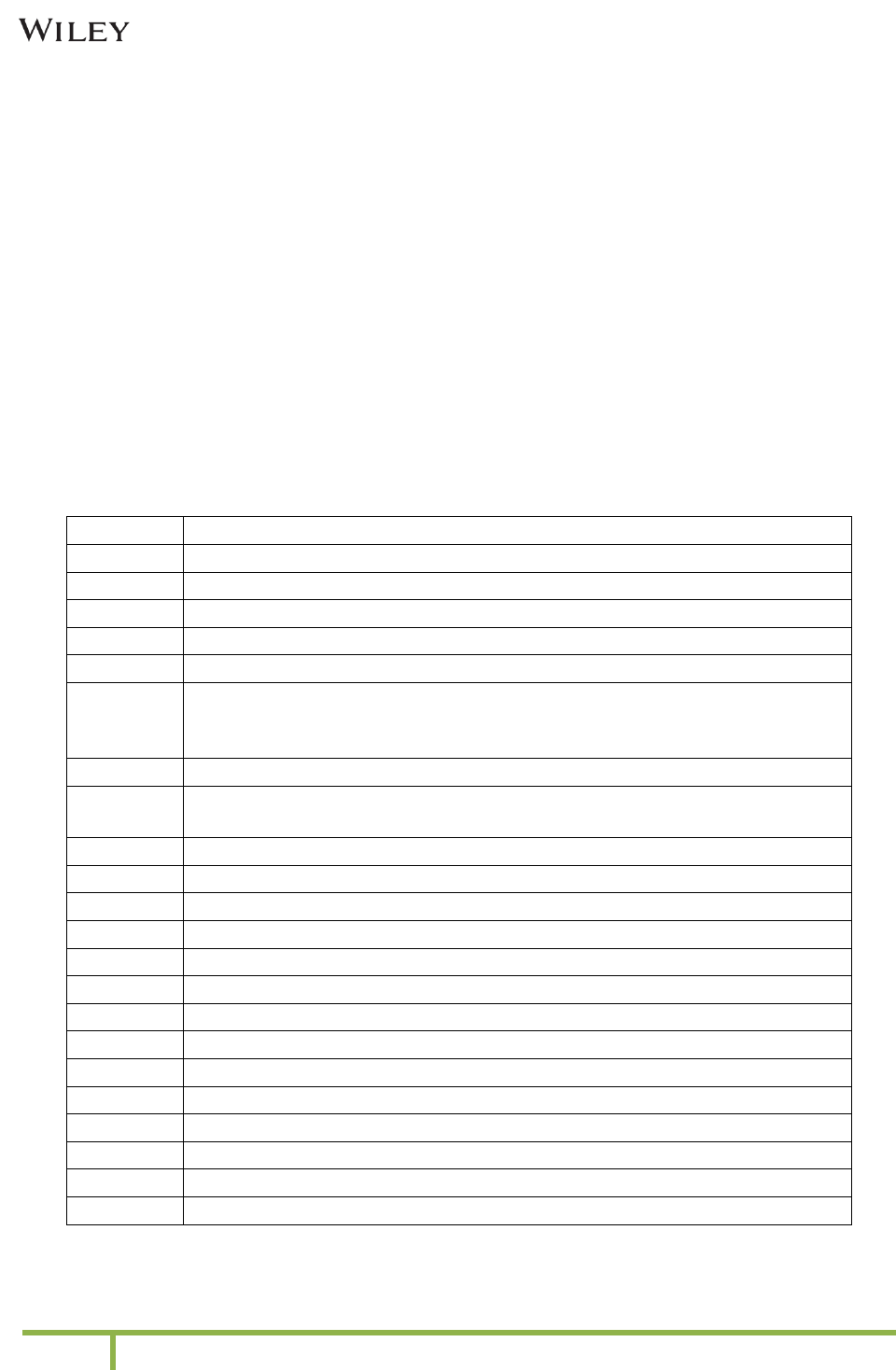
Version 1.3 Wiley Documentation
45
© Wiley
- Microorganism names applied to laboratory media are lowercase and roman.
For example: brucella agar.
- Capitalization indicates a product name.
For example: Haemophilus ID Quad agar.
- In text dealing with infectious conditions, it is important to distinguish between the
infectious agent and the condition:
For example:
Incorrect: Haemophilus influenzae may be a life-threatening disease.
Better: Haemophilus influenzae infection may be life-threatening.
Preferred: Infection with Haemophilus influenzae may be life-threatening.
Pulmonary and Respiratory Terminology
The following are some common abbreviations from pulmonary function testing; they should
always be expanded at first mention:
ACMV
assist/control mode ventilation
cc
closing capacity
CPAP
continuous positive airway pressure
cv
closing volume
ERV
expiratory reserve volume
FEF
200-1200
forced expiratory flow between 200 and 1200 mL of FVC
FEF
25%-75%
forced expiratory flow, midexpiratory phase (formerly midmaximal
expiratory flow rate [MMEFR]; midflow; midmaximal flow [MMF]; or
midexpiratory flow rate [MEFR])
FEV
forced expiratory volume
FEV
1
forced expiratory volume in 1 second; forced expiratory volume in the
first second
FIVC
forced inspiratory vital capacity
FRC
functional residual capacity
FVC
forced vital capacity
IRV
inspiratory reserve volume
IVC
inspiratory vital capacity
MVV
maximum voluntary ventilation
PCV
pressure-control ventilation
PEEP
positive end-expiratory pressure
PEF, PEFR
peak expiratory flow rate
PSV
pressure-support ventilation
RV
residual volume
SIMV
synchronized intermittent mandatory ventilation
TLC
total lung capacity
vc
vital capacity

Version 1.3 Wiley Documentation
46
© Wiley
3.2.19 Eponyms
• The eponym, but not the noun or adjective that accompanies it, should be capitalized.
For example: Osler nodes.
• Adjectival and derivative forms of proper names used in terms are not capitalized.
For example: parkinsonian gait (from Parkinson disease).
3.2.20 Greek Letters
• According to IUPAC, symbols representing physical quantities (or variables) are
italicized, but symbols representing units, or labels, are roman. For any doubts, raise an
author query.
• Sometimes there may seem to be doubt about whether a symbol represents a quantity or
has some other meaning (such as a label): a good general rule is that quantities, or
variables, can be given a value, but labels cannot.
• Vectors, tensors, and matrices are usually denoted with a bold-face (heavy) font, but they
should be set roman.
• Refer to Stedman’s and Dorland’s medical dictionaries for general terms.
• For drug names that contain Greek letters, spell out alpha, beta, and so on.
For example: Interferon beta-1a
• In some cases, when the Greek letter is part of the word, such as betamethusone, the Greek
letter is spelled out and set closed up.
3.2.21 Gene Names
• If the author defines a gene symbol, keep the definition.
• If a gene symbol is used only once or twice, there is no need to define the symbol.
• If the symbol is defined, always keep the symbol as well as the definition even if the
symbol is used only once (because some genes are better known by the symbol).
• Do not define gene symbols when there is no good definition.
3.2.22 General Rules
• Spelling errors: plain spelling errors in normal English words are to be corrected.
• Indefinite and definite articles must be corrected.
• Italicize the genus and species name. Mycobacterium avium (Genus species) in article title,
at first mention in Abstract, main text, but M avium thereafter (without a period).
• Fundamental errors in syntax must be corrected.
• Incorrect word inflection must be corrected.
• Genes in italics, proteins in roman.
• P values should be uppercase italics.

Version 1.3 Wiley Documentation
47
© Wiley
• Omit the period from honorifics, scientific terms, and abbreviations.
• Do not use a colon if the sentence is continuous without it.
• Italics are not used if words or phrases are considered to have become part of the English
language (eg, cafe au lait, in vivo, in vitro, en bloc).
• Do not use possessive form in eponyms.
• Displayed and block quotes to be set in roman.
• No period is used after et al (the same is true for eg, ie, and ip).
• Use health care (spaced).
3.2.23 Spelling out Numbers
• Spelling out numbers:
- Spell out zero to nine. Here Wiley style deviates from AMA style.
• When spelling out numerals, hyphenate twenty-one through ninety-nine.
• When numbers greater than 100 are spelled out, do not use commas or “and.”
• Common fractions are expressed with hyphenated words whether the fraction is used as
an adjective or a noun. Mixed fractions (ie, common fractions greater than 1, such as 3½)
are typically expressed in numerals.
• Spell out numbers when used as pronouns.
• Ordinals first through ninth are spelled out.
• Ordinals greater than ninth are expressed as numerals (10th, 11th, and so on) except at
the beginning of a sentence, title, subtitle, or heading.
• The word number may be abbreviated No. in the body of tables and line art (not in the
title, footnotes, or legend) or in the text when used as a specific designator.
• No comma is used before the roman numeral. For example: Schedule II drug.
• Use roman numerals for cancer stages and Arabic numerals for cancer grades.
• Hyphenate a compound in which a number is the first element and the compound
precedes the noun it modifies. For example: 7-fold increase.
• Decimals:
- Place a zero before the decimal point in numbers less than 1, except when
expressing the three values related to probability: P, α, and β (updated in accordance
with AMA Manual of Style, 10th edition, section 19.7.1, on 23 October 2018).
- By convention, a zero is NOT used in front of the decimal point of the measure of the
bore of a firearm. For example: .22-caliber rifle (updated in accordance with AMA
Manual of Style, 10th edition, section 19.7.1, on 23 October 2018).
• For ranges and words of equal weight, use hyphen, not en dash (eg, cost-benefit ratios;
AMWAJ 1995;10:55-58).

Version 1.3 Wiley Documentation
48
© Wiley
4 Copyediting Level 2
This level constitutes the standard copyediting level. Some journals have much more
comprehensive style sheets, or guides, than others, so this level covers a range of editing that is
dependent on the extent of the rules and the level of editorial office expectations. The CE2
specifications are composed of CE1 rules and other additional copyediting tasks mentioned
below.
4.1 Mechanical Editing
Refer to section 2.
4.2 Copyediting
4.2.1 Preferred Spelling
American English: Merriam-Webster’s Collegiate Dictionary (2005).
Exception:
For AMA-style journals whose titles use UK spelling, retain UK spelling.
4.2.2 Parallel Construction
Correlative Conjunctions
This device may rely on accepted cues (either/or, neither/nor, not only/but also, both/and). In
this usage, the correlative conjunctions are often misplaced. All elements of the parallelism that
appear on one side of the coordinating conjunction should match corresponding elements on the
other side.
Avoid: Poor drug efficacy may be caused by either lack of absorption or by increased clearance.
Better: Poor drug efficacy may be caused either by lack of absorption or by increased clearance.
Also Correct: Poor drug efficacy may be caused by either lack of absorption or increased
clearance.
Avoid: Three patients either took their medication incorrectly or not at all.
Correct: Three patients took their medication either incorrectly or not at all.
In Series or Comparisons
Parallel construction may also present a series or make comparisons. In these usages, the
elements of the series or of the comparison should be parallel structures (ie, nouns with nouns,
prepositional phrases with prepositional phrases).
Avoid: When an operation is designed to improve function rather than extirpation of an organ,
surgical technique becomes paramount.
Better: When an operation is designed to improve the function of an organ rather than to
extirpate the organ, surgical technique becomes paramount.
Note: Using either or neither with more than two items is incorrect. Avoid the use of nor when
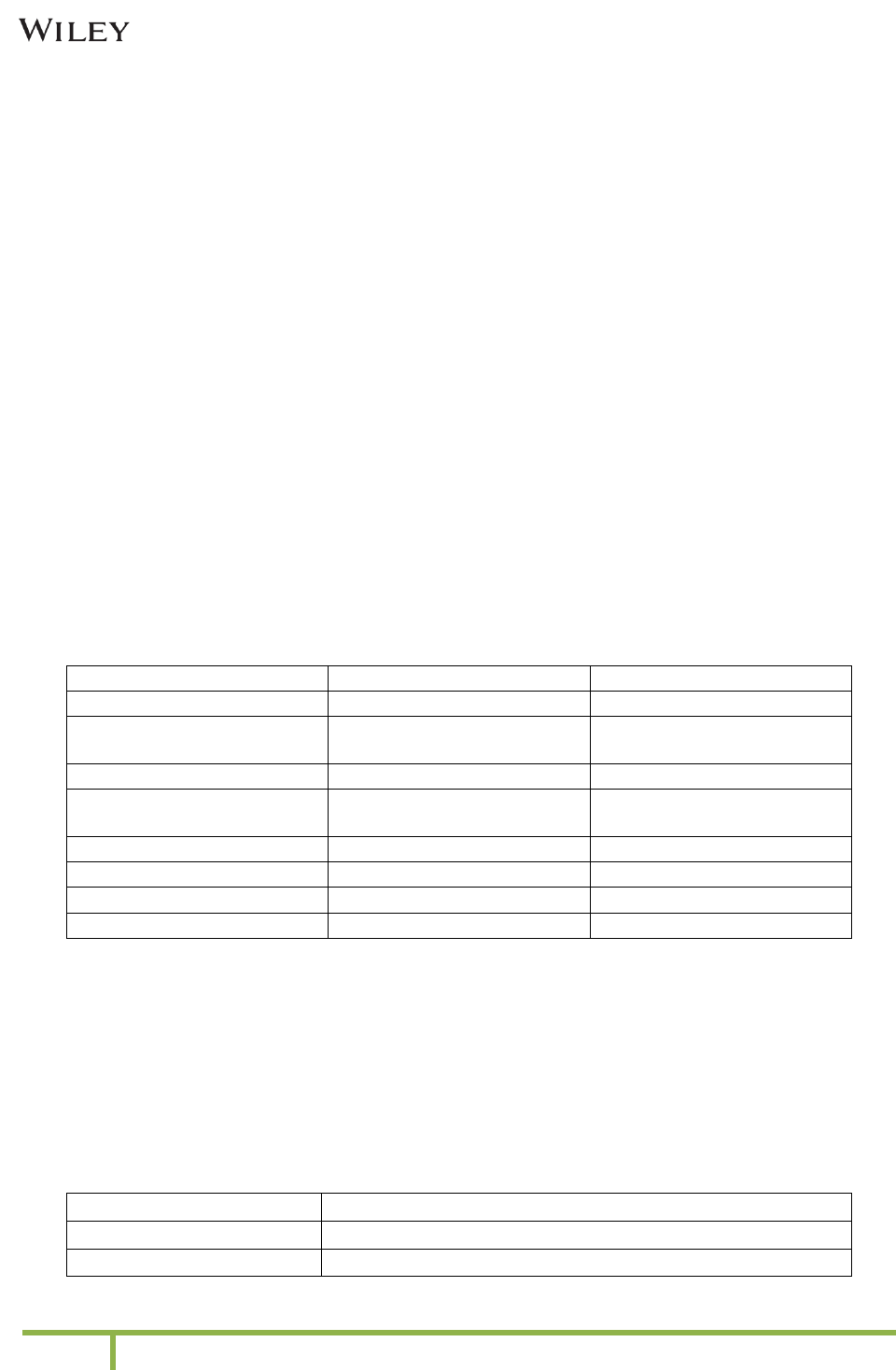
Version 1.3 Wiley Documentation
49
© Wiley
the first negative is expressed by not or no.
4.2.3 Misplaced Modifiers
Unclear: The patient was referred to a specialist with a severe bipolar disorder. (Who had the
bipolar disorder?)
Clear: The patient with a severe bipolar disorder was referred to a specialist.
Unclear: Dr Young treated the patients using antidepressants. (Who used the antidepressants?
Ambiguity makes two meanings possible.)
Better: Dr Young treated the patients with antidepressants. Or (alternative meaning): Dr Young
treated the patients who were using antidepressants.
Verbal Phrase Danglers
Avoid: Dietary therapy slows the return of hypertension after stopping long-term medical
therapy. (This states that dietary therapy not only slows the return of hypertension but also stops
prolonged medical therapy.)
Better: Dietary therapy slows the return of hypertension after cessation of long-term medical
therapy.
4.2.4 Commonly Misused Words and Phrases
Take note of the following misused words and phrases.
abort, terminate
as, because, since
dilate, dilation, dilatation
accident, injury
assure, ensure, insure
disinterested, uninterested
acute, chronic
because of, owing to, caused by,
due to
effective, effectiveness
adapt, adopt
calorie, energy
efficacious, efficacy
adverse effect, adverse event,
adverse reaction, side effect
catatonic, manic, schizophrenic
endemic, epidemic,
hyperendemic, pandemic
affect, effect
classic, classical
historic, historical
aggravate, irritate
clinician, practitioner
immunity, immunize
although, though
compare to, compare with
inoculate, vaccinate
among, between
compose, comprise
Merriam-Webster’s Collegiate, Stedman’s, Dorland’s, and American Heritage dictionaries are
resources for determining the appropriate suffix form for adjectives.
• When numbers of persons, things, or groups are referred to, over and under should be
replaced by more than and less than. Symbols such as < and > are appropriate to use in
tables and figures but not in running text.
• Avoid redundant words.
4.2.5 Jargon
Jargon
Preferred form
4+ albuminuria
proteinuria (4+)
blood sugar
blood glucose (query author)
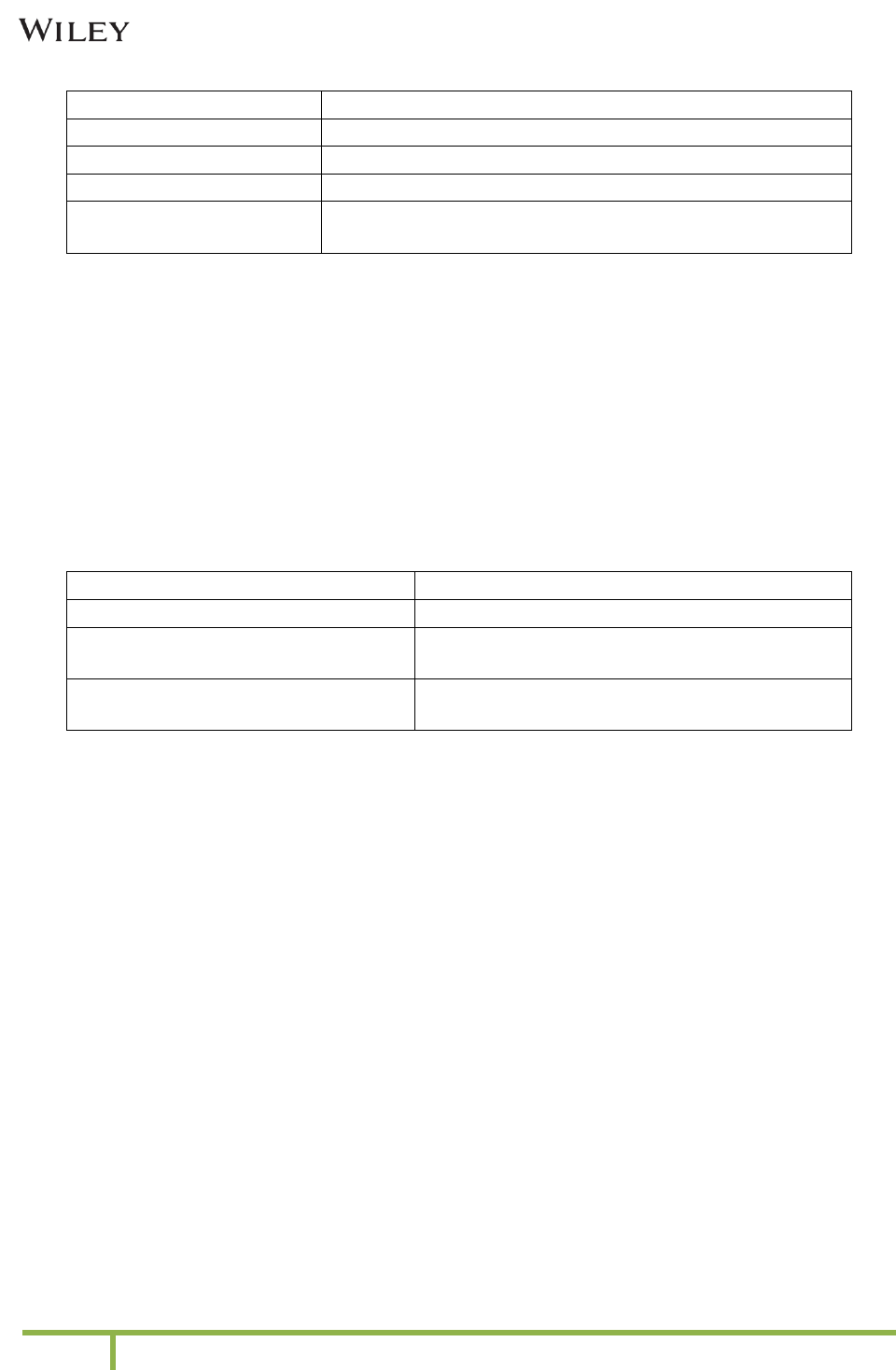
Version 1.3 Wiley Documentation
50
© Wiley
cardiac (diabetic) diet
diet for patients with cardiac disease (diabetes)
emergency room
emergency department
exam
examination
congenital heart
congenital heart disease; congenital cardiac anomaly
hyperglycemia of 250
mg/dL
hyperglycemia (blood glucose level of 250 mg/dL)
4.2.6 Anatomy
Use:
• right side of the heart; right atrium; right ventricle
• left side of the chest; left hemithorax
• left aspect of the neck
• right hemisphere (query author)
4.2.7 Disabilities
Avoid
Preferred
the disabled, the handicapped
persons with disability
disabled child, mentally ill person,
retarded adult
child with a disability, person with mental
illness, adult with mental retardation
diabetics
persons with diabetes, subjects in the diabetes
group (ie, in a study), diabetic patients
4.2.8 Grammar
• Articles are used according to standard rules of usage.
• Basic agreement in subject-verb, person, and number is checked.
• Inconsistencies in active/passive voice, first/third person, and present/past tense should
be corrected; idiom/style should be corrected.
• Definite/indefinite articles.
4.2.9 Usage
Commonly misused terms are corrected; many gender-specific terms have a neutral equivalent
(eg, mankind/humankind).
4.2.10 Scientific and Mathematical Content
• In general, lines, variables, unknown quantities, and constants (eg, x, y, z, A, B, C) are set
in italics.
• Units of measure (eg, kg, mL, s, m), symbols, and numbers are set in roman.
• The AMA uses a thin space before and after the following mathematical symbols: ±, =, +, -

Version 1.3 Wiley Documentation
51
© Wiley
, ÷, ×, and ~. Note that copyeditors should use ordinary spaces; the compositor will set
this.
• Symbols are set close to numbers, superscripts and subscripts, greater than or less than
signs, and parentheses, brackets, and braces.
• Use italics for chemical prefixes (N-, cis-, trans-, p-, etc), for restriction enzymes, and for
lowercase letters used in alphabetic enumerations of items or topics (the parentheses are
set roman): (a), (b), (c), etc.
4.2.11 Manuscript Components
• Every citation in text should have a counterpart; verify the appropriateness of all section
and head levels; complete a reference check; check that reference callouts in the text
match the actual number of authors and also the listed references; perform a close
reading and editing of tables; check figure legends against figures; make or recommend
changes for sense, clarity, or consistency; and query the author to verify the changes were
made.
• Query for all drug dosages; this can be done as a blanket query.
• Add a query pointing out that the author should have obtained permission to reproduce
material.

Version 1.3 Wiley Documentation
52
© Wiley
5 Copyediting Level 3
This is a level of copyediting that requires extremely experienced copyeditors who can produce
results of noticeably greater breadth than is required for CE2 editing. Style sheets, or guides, for
CE3 journals are lengthy and complex. The CE3 specifications include CE1 rules and other
additional editing rules mentioned below.
5.1 Mechanical Editing
Refer to section 2.
In addition, the copyeditor is expected to apply high-level discipline-specific rules for
abbreviations and nomenclature.
5.2 Copyediting
5.2.1 Spelling
Spellings of trade and nonproprietary drug and equipment names, medical and nonmedical
terms, and specialty-specific phrases; US/UK spellings; and non-English words and terms with
diacritical marks and accents should be verified. PubMed or Google searches may be used to
verify the usage and spelling of specialty-specific terms and phrases; eponyms should be checked
and used consistently; different spellings may be used for noun/adjective word forms; and the
style for statistical terms and tests should be consistent in text, tables, and figures throughout the
journal. Other sources, generally databases for international standards, are used for verification,
as specified in the style manual.
5.2.2 Grammar
• Articles are used according to standard rules of usage.
• Basic agreement in subject-verb, person, and number needs to be checked.
• Inconsistencies in active/passive voice, first/third person, and present/past tense should
be corrected; idiom/style should be corrected.
• Definite/indefinite articles should be added when needed.
5.2.3 Syntax
• Redundancies are queried or eliminated; run-on sentences are shortened or broken up or
the author is queried to rewrite the sentence; and dangling modifiers are fixed. Text is
rephrased to achieve parallel structure; rephrase any awkward or infelicitous phrases to
achieve the greatest clarity; ask the author to verify the changes; and rephrase text for
clarity even if the original does not contain a grammatical error.
• Parallel structure with compound verbs or participles should be checked.
• Reword sentences for clarity and ask the author to verify the rephrasing.

Version 1.3 Wiley Documentation
53
© Wiley
5.2.4 Usage
• Commonly misused terms are corrected; gender-specific terms have a neutral equivalent
(eg, mankind/humankind).
• Correct for ethical appropriateness and stereotypical language.
5.2.5 Scientific and Mathematical Content
• Refer to section 4.2.10.
• Content editing: Verify facts in articles using outside sources (eg, references, Internet
searches, databases).
5.2.6 Manuscript Components
• Every citation in text should have a counterpart; verify the appropriateness of all section
and head levels; complete a reference check; check that reference callouts in the text
match the actual number of authors and also the listed references; perform a close
reading and editing of tables; and make or recommend changes for sense, clarity, or
consistency, including reorganizing the tables.
• Tables can be edited to save space (eg, several heads can be combined into one in a virgule
construction to save space [Study/Y/%]).
• Query for all drug dosages; this can be done as a blanket query.
• Clarify language as much as possible, whether or not an indisputable error has occurred.
The author is asked to verify all changes.
• Read the abstract content against the article content to ensure that the abstract correctly
reflects the article’s thesis, methods, and conclusion. The copyeditor may also edit the
article title on the basis of content and query.
• Revision of poor writing that is a result of an author’s lack of familiarity with English is
undertaken.
• Check whether text, tables, or illustrations require permission to be reprinted. If there are
strong indications that an element of the article could have been published previously
elsewhere but there is no indication that permission to reproduce has been obtained, it
is reasonable to add a query pointing out that the author should have obtained
permission to reproduce the material.
5.2.7 Typography
Typography is broadly defined as the arrangement and appearance of printed matter and
involves elements of design. For more information, see AMA Manual of Style, chapter 22.

Version 1.3 Wiley Documentation
54
© Wiley
APPENDIX
Differences Between Original AMA and Wiley AMA
Original AMA
Wiley AMA
Article history
US convention for article history
dates
European convention for article history
dates
For example:
Submitted for Publication:
November 22, 2004; final revision
received May 13, 2005; accepted
May 23, 2005.
For example:
Received: 5 July 2016 | Revised: 2
October 2016 | Accepted: 29 October
2016
Article title
Article title set in title case
Article title set in sentence case
Author affiliation
Given in title page footnotes
Placement below author names on the
first page
Author
correspondence
Given in the acknowledgment
section at the end of the article
before the References in a footnote
Placement below author affiliations on
the first page
Title page
footnotes
Preferred order of the footnotes:
• Author affiliations
• Death of an author
• Corresponding author contact
information (for some journals
given in acknowledgment
section)
Footnote order:
• Abbreviations
• Equal contributions
• Paper presentation
• Deceased authors
For example:
Author Affiliations: Department of
Pediatrics, Baylor College of
Medicine, Houston, Texas.
†Died November 3, 2005.
A List of the XYZ Group members
appears at the end of this article.
Corresponding Author: John A.
Doe, MD, Department of Pediatrics,
Baylor College of Medicine, 1 Baylor
Plaza, Houston, TX 77030
For example:
Abbreviations: CR, conserved region; CSC,
cancer stem cell; EC, embryonic
carcinoma; ES, embryonic stem; GCNF,
germ cell nuclear factor; NR, nuclear
receptor; PP, proximal promoter; RA,
retinoic acid.
Myrtle Coe and Simon Foe contributed
equally to this study.
This study was first presented at the...
†Died May 14, 2014.
Running head
Shortened version of the article title
No short title
Heading levels
Follow journal style
Numbered and unnumbered
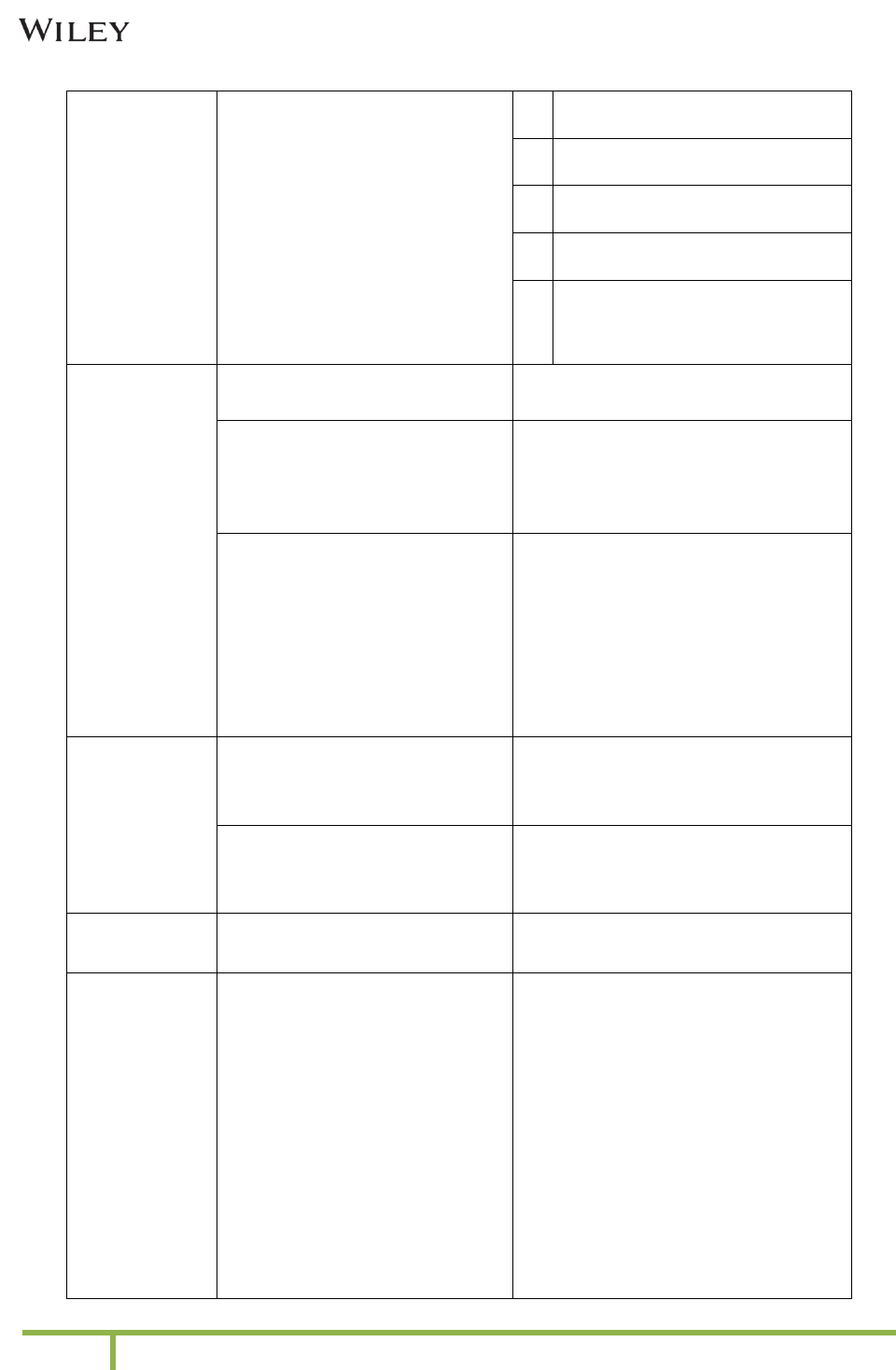
Version 1.3 Wiley Documentation
55
© Wiley
1
NUMBERED, FLUSH LEFT, BOLD,
ALL CAPS
2
Numbered, flush left, bold,
sentence case
3
Numbered, flush left, bold,
sentence case
4
Unnumbered, flush left, italicized,
sentence case
5
Unnumbered, flush left, italicized,
sentence case, ending with period,
run-on.
Figure legends
Both figure titles and legends can be
used
Only legends are used
• Legends do not start with a
figure label
• Legends end with a period
• Legends start with figure label (in all
caps and bold without a period)
• Legends do not end with a period
For example:
A, Histological section of the
vertebral specimen… (unstained,
original magnification ×400). B, For
comparison, a bone tissue
section…the trabecular surface
(hematoxylin-eosin, original
magnification ×400).
For example:
FIGURE 1 A, Histological section of the
vertebral specimen… (unstained, original
magnification ×400). B, For comparison, a
bone tissue section…the trabecular
surface (hematoxylin-eosin, original
magnification ×400)
Table legends
• Table label set in roman and
bold followed by a period
• Table legend set in title case
• Table label in all caps and bold
without period
• Table legend set in sentence case
For example:
Table 1. Symptoms and Signs of
Chronic Fatigue Syndrome
For example:
TABLE 1 Symptoms and signs of chronic
fatigue syndrome
Table column
headings
Set in title case
Set in sentence case
Table footnotes
Order of notes:
• Abbreviations
• Units of measure conversion
information
• Specific notes (indicated with
lowercase superscript letters,
including probability notes)
For example:
Abbreviation: CBT, cognitive
behavior therapy.
a
Values are expressed as mean (SD)
unless otherwise indicated.
b
The range for possible scores is 17
to 113.
Order of notes:
• General notes
• Abbreviations
• Specific notes
• Probability notes (indicated by
asterisks)
For example:
Note. Factor loadings greater than .45 are
shown in boldface.
Abbreviations: OR, odds ratio; CI,
confidence interval; UWCB, unhealthy
weight control behaviors.
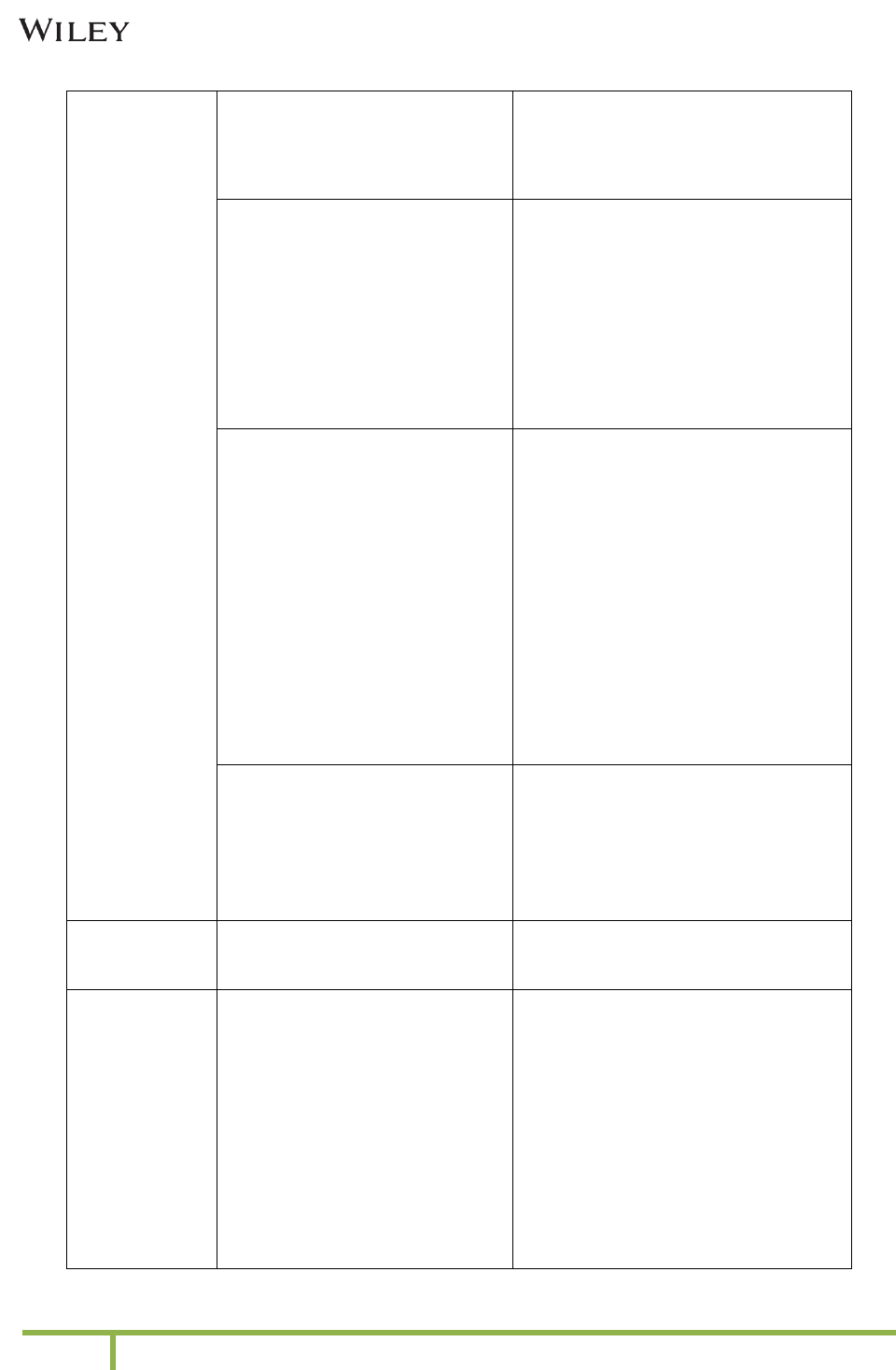
Version 1.3 Wiley Documentation
56
© Wiley
c
P values are for the χ
2
test unless
otherwise indicated.
a
n = 25.
b
This participant did not
complete the trials.
*P < .05. **P < .01.
General notes (that apply to the
entire table): indicated by a
lowercase superscript letter placed
after the legend text
For example:
Table 1. Symptoms and Signs of
Chronic Fatigue Syndrome
a
General notes: appear first in the footnote
section with the heading “Note” in italics
(this heading is not required if there are
only labelled and linked table footnotes)
For example:
Note. N = 233,428.
Abbreviations and units of measure
conversion footnotes appear first in
the footnote section and are set off
with an introductory word or
phrase instead of a letter.
For example:
Abbreviations: CRP, C-reactive
protein; HDL, high-density
lipoprotein; LDL, low-density
lipoprotein.
SI conversion factors: To convert
HDL, LDL, and total cholesterol to
mmol/L, multiply by 0.0259.
No separate footnote for units of measure
conversion information. Heading for
abbreviations: “Abbreviations” or
“Abbreviation” (if there is only one
abbreviation).
For example:
Note. SI conversion factors: To convert
HDL, LDL, and total cholesterol to
mmol/L, multiply by 0.0259.
Abbreviations: CRP, C-reactive protein;
HDL, high-density lipoprotein; LDL, low-
density lipoprotein.
Footnote letters before the footnote
text are followed by a space for
clarity
For example:
b
This participant….
Superscript letters closed-up with
footnote text
For example:
b
This participant….
Enunciations
(math
statements)
No information
Follow AMS style for enunciations (math
statements)
Endnotes and
page footnotes
Footnotes should be avoided within
the text. Such explanatory material
can usually be incorporated into the
text parenthetically. However, if
required use footnote symbols (*, †,
‡, §, ¶, #, ||,**, ††, ‡‡, §§, ¶¶, ##).
No information about endnotes
Footnote symbols are followed by a
space
Both endnotes and page footnotes can be
used. Endnotes are indicated by
superscript lowercase letters, page
footnotes by AMA symbols (*, †, ‡, §, ¶, #,
||,**, ††, ‡‡, §§, ¶¶, ##)
Footnote symbols are closed-up with
footnote text

Version 1.3 Wiley Documentation
57
© Wiley
Appendix
Heading in title case
Heading in all caps
Numbers
Use numerals for 0-9
Spell out 0-9
Frequently Asked Questions (FAQS)
1. Should references cited in the body of a table be moved to the caption?
Wiley: References do not necessarily have to be moved to the caption; sometimes it is
more logical to leave them in table text or footnotes.
2. We usually do not edit the article title or subtitle for drug names. Can you please provide
the list of approved generic or nonproprietary names, if available? Alternatively, please
suggest the URL or web link where such details are available.
Wiley: Raise an author query to conform the drug names if found in title/subtitle.
3. What do vendors need to do if reference citations are given in the abstract section?
Wiley: In AMA 10th, 2.5.3. General Guidelines (p 24), it clearly states “Do not cite
references.” Delete them; we suggest changing it to “a previous study” (eg, change Smith
et al
24
to “a previous study”).
4. Gene symbols in italics?
Wiley: If a symbol clearly refers to a gene, make it italic and query the author.
5. Use of owing to/because of/due to in this scenario: Do we have to differentiate between
these? As per our understanding, “he lost the first game because of carelessness”
(“because of” is modifying the main verb “lost”) and “the accident was due to bad
weather” (“due to” is preceded by the supporting verb “was”)
Wiley: Usually change “owing to” to “because of.” Use of “due to” is correct here.
6. How many times must an abbreviation be used for the abbreviation to be retained?
Wiley: Once in the abstract and once in the main text, at the first mention.
7. Should a blanket query to authors be inserted to verify all dosages here and throughout
an article?
Wiley: Query at the first mention of a specific dose (eg, 5 Gy was administered…).
8. Should we change “weighed about 200 g” to “weighed approximately 200 g”?
Wiley: “Approximately” is preferred in formal writing.
9. Should we also spell out elements and compound names (CO
2
, O
2
)?
Wiley: Not necessary.
10. “An infectious disease regional center.” This is marked to be set in lowercase. Can all
organization names also be lowercase?
Wiley: No, not all organization names should be lowercase. The addition of an before
the department name in this case makes it generic.
11. “Using” is also correct and is used commonly. Is this a preference? Please clarify.
Wiley: Preference. However, please make sure that your copyeditors do not change with

Version 1.3 Wiley Documentation
58
© Wiley
to using.
12. Change “while” to “whereas” (when “while” is not referring to time) Is this change not
required in journals following AMA?
Wiley: No, neither AMA 10th nor Merriam-Webster’s makes this distinction. This is a
requirement only in APA. You can leave in journals following AMA. However, the
preference is to use “while” only when referring to time in AMA.
13. Usually we do not define well-known abbreviations (never expand certain
abbreviations); however, if the author provides definitions for these abbreviations in
the input file itself, we retain them as given. Hope this is OK, but please confirm.
Wiley: No. According to AMA 10th, these words need not be expanded. If author input is
expanded, you can abbreviate and raise a query to the author for confirmation that you
have followed AMA style.
14. Are the trademark and registered symbols allowed in AMA?
Wiley: No. AMA 10th, 5.6.16 Trademark/Use of Trademarked Names in Publication (p
213): The symbols TM, ®, and SM should be deleted from the text.
15. Should all Greek letters be rendered in italics?
Wiley: According to IUPAC, italic and roman Greek letters have different meanings.
Ideally, Greek letters representing physical quantities or variables are set in italics, and
Greek letters representing units and labels in roman. Vendors are expected to check
whether Greek letters representing variables are set in italics; if not raise an author
query.
